
WORKPLACE RELATIONS LAW: THE CURRENT SCENE
PRE-BUDGET SUBMISSION
• DEFINING ‘UNREASONABLE’ RECTIFICATION COSTS IN CONSTRUCTION
• DEPOSITS IN FIXED PRICE CONTRACTS
• ENERGY EFFICIENCY IN CONSTRUCTION


WORKPLACE RELATIONS LAW: THE CURRENT SCENE
PRE-BUDGET SUBMISSION
• DEFINING ‘UNREASONABLE’ RECTIFICATION COSTS IN CONSTRUCTION
• DEPOSITS IN FIXED PRICE CONTRACTS
• ENERGY EFFICIENCY IN CONSTRUCTION






The Rawlinsons Australian Construction Handbook 2024 stands as an essential guide for anyone involved in the Australian construction industry. Its comprehensive coverage, accurate data, and commitment to excellence make it an invaluable resource for professionals, educators, and students alike.

Providing reliable cost data since 1983, the Handbook & Cost Guide remain a trusted guide for navigating the complexities of construction projects.

Kirsty Maxted
16 Tanunda Drive Rivervale
08 9424 5800
https://www.rawlhouse.com.au/

I am happy to give my recommendation to use Waterstop Streamline. It is the only modern looking product that I have seen that positively connects the shower screen to the waterproofing in a completely leak free way...
Mr Albert Aeberhard Builder, Hotondo Homes Group ACTBy using Waterstop Streamline
I know the shower will be perfect every time. It has to be, because this product is designed to dictate placement of all of the other components to make up the complete shower. It’s virtually impossible to stuff it up.
Mr Glen Whitehead Managing Director, BJM Developments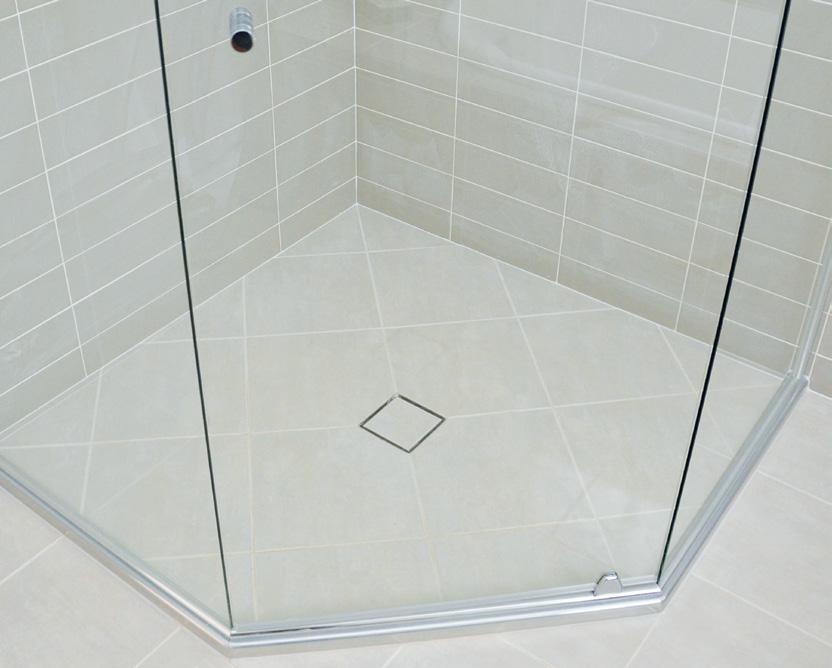
With so many new products on offer in our industry it is difficult to find time to investigate them all. We are very glad we made time for this one.



My business has expanded rapidly since we started using the Waterstop Streamline hob and now I have tilers voluntarily recommending the Waterstop system – and me – to other builders. Everyone that uses it loves it.
Waterstop is easy to order with efficient delivery. It has given us the edge on our competitors and is our preferred method of waterproofing and tiling showers.
Mr FredMeddings Managing Director, Watertight Australia (Waterproofers)

IF YOU ARE ONE OF OUR COMPETITORS READING THIS AD PLEASE IGNORE.

Switching to the Waterstop Streamline system has been a fantastic result for the company. It ticks all the boxes by being modern, sleek, easy to install and failsafe.
Costly repairs associated with leaking shower trays are now a thing of the past.
Luke Pearce QLD Construction Manager, Devine Homes
 Tony Glover
Tony Glover Tiling & Waterproofing
Tony Glover
Tony Glover Tiling & Waterproofing
Waterstop Streamline –
Why would anyone use anything else to build a shower?
At last someone has got a product together that not only works, but it looks good and is so easy for every trade to work with. It even comes with step by step instructions on the protective tape.
Mr Andrew Shailer
Andrew Shailer Tiling

For more information, visit www.waterstopstreamline.com.au
Phone 07 5426 3700
• Fax 07 5426 3711
• Email sales@gleda.com.au

Using Waterstop Streamline in all our shower areas has made life easy for waterproofing and our tilers. They are so simple to install and always look very professional. I recommend to all my clients to use the Waterstop Streamline system in their shower areas.
Mr Kerry Blake Director, Blake’s WaterproofingOmesh Jethwani engages with Tamika Smith, Founding Director of My Bella Casa, Executive Chair of Top 100 Women, and Founder of TSR Property Solutions, to discover her professional journey, notable achievements, and her perspectives on the construction sector, emphasising her dedication to social and affordable housing and women’s empowerment in the industry.

Workplace Relations Law — is it working to help build a robust future for all Australians?
43 Discrimination, sexual harassment and gender-based stereotypes impacting women in construction
Building Commission NSW releases a new, first-ofitskind report comprehensively examining the status of women in the construction industry today.
70
76
Excellence in Brick and Block Awards
Masonry Contractors Australia (MCA) conducted its Annual Awards for Brick and Blocklaying Excellence in November 2023. Celebrating the winners among 28 entries over eight categories.
The Metal Roofing and Cladding Association of Australia (MRCAA) conducted its Awards of Excellence in November 2023. Celebrating the winners among the 150 entries over 16 categories.
News
ABN: 63 009 820
Phone: (07) 4599
Website: www.newscorpaustralia.com

old copy

52 Parramatta Road, Forest Lodge NSW 2037 | Private Bag 9, Broadway NSW 2007
Tel: 02 8586 3555 | Email: enquiries@mbansw.asn.au
Website: www.mbansw.asn.au | ABN 96 550 042 906
EXECUTIVE BOARD
Robert Black President
Michael O’Donnell Deputy President
Simon Pilcher Immediate Past President
Mick Banks Vice President
Colin Jewell Vice President
Frank Mamasioulas Vice President
Paul Edwards Vice President

The unique markings on the longitudinal and crossbars of the mesh do not match the markings on the quality certificate sent to the customer.
Two options to protect yourself:
1. Verify the markings on the mesh MATCH the markings on the certificate.
If they don’t match, return the mesh to the supplier as non-conforming product.

2. Buy steel mesh from a SRIA member.
ALL SRIA members hold current JASANZ accredited 3rd party certification to prove their mesh conforms to AS/NZS 4671.
View members
Don’t take the risk of having to replace the building or structure because you used non-conforming steel mesh.

In this edition of Master Builder, we bring to you an abridged version of the Master Builders Australia’s 2024-25 Pre Budget Submission. This document is more than just a submission; it’s a blueprint for the future of our industry, addressing the challenges and opportunities we face in building and construction.
Our industry is facing significant change. As we experiecnce worker shortages, rising costs for materials, and the need for sustainable development, it’s clear that strategic investment and policy reform are crucial. Every one dollar spent in the building and construction industry generates three dollars for the Australian economy, laying the groundwork for long-term prosperity.
Our submission is focused around three key areas: enhancing productivity, addressing workforce shortages, and mitigating the impact of material cost increases. We’re pushing for easier work rules, smart solutions for the housing crisis, and better infrastructure to link places and people.
A strong building industry makes a strong economy. Every $1 spent in the construction industry generates $3 for the Australian economy.
Sustainability and resilience are at the heart of our recommendations. As we aim for the 2050 sustainability goals, it’s imperative that our industry leads in adopting sustainable building practices. This commitment not only aligns with global environmental targets but also ensures the longevity and resilience of our built environment.
I urge all stakeholders to consider these recommendations. Together, we can overcome the current challenges and shape a future where the building and construction industry continues to be a cornerstone of the Australian economy.
Bob Black MBA NSW President



The Federal Government was elected to power on 21 May 2022, some two years ago. In that time the Government has fundamentally altered the Australian system of workplace regulation and landscape despite a lack of genuine consultation with industry, businesses — large and small, independent contractors and sector stakeholders. A brief recap of the changes we have seen since May 2022 is therefore timely.
We have witnessed the abolition of the Australian Building and Construction Commission (ABCC) leaving our industry without a dedicated regulator for the first time in over 30 years. Coupled with the removal of the Building Code, this has left the industry unprotected and, when it comes to effective reporting of errant union behaviour.
On top of this, workplace law has been greatly altered. We now have multi-employer bargaining which gives building unions the right to strike on an industry-wide basis. Unions can now decide when workers are allowed to vote on a proposed Enterprise Bargaining Agreement (EBA) and unions now have the final say on whether or not a proposed EBA will be approved. Unions also have the ability to unilaterally initiate bargaining as well as greater rights to prevent businesses from terminating EBAs.
In addition, the Same Job Same Pay changes mean that a subcontractor may be forced to pay the same rates as a head contractor. The new law also contains powerful rights for union delegates, and new offences for employers if they fail to deal with delegates properly. The upshot of these changes is that any business may now have a
union delegate foisted upon it. Other new rights for delegates include paid time off for training (small businesses excluded) and powerful new rights allowing a union official (with or without an entry permit) to attend a worksite without any notice if they are accompanying a Health and Safety Representative for safety purposes.
The introduction of Wage Theft into the law now means that accidental underpayments risk being assessed as criminal behaviour with up to 10 years in jail as punishment.
The new law winds back an established High Court Judgment which gave long-needed clarity concerning the age old question of employee versus contractor status. We now return to a confusing test which will create uncertainty and pave the way for claims of sham contracting. Lastly, in relation to the right of entry for investigation of suspected underpayments of wages, a union delegate will no longer need to give 24 hours’ notice to enter workplaces to investigate suspected underpayments.
At the time of going to print, copies of the new construction union enterprise agreement have been released to the industry. The three-year agreement calls for a 26% increase in wages, increase to superannuation contributions and allowances, and a shorter working week with no productivity off-sets. The other interesting provision is the requirement that the employer take “all reasonable steps to encourage employees to become financial members of the union.”
It will take time for the full effect of the new employer laws and union agreements to be felt, but the results will no doubt mean increased costs to build, uncertainty in regard to contracting and increased disputation.
Brian Seidler MBA NSW Executive DirectorSustained advances in living standards cannot be achieved without productivity growth. According to the Productivity Commission’s Quarterly Productivity Bulletin in September 2023, there was a 2.0 per cent reverse in labour productivity during the June 2023 quarter. The losses resulting from subpar productivity growth are confronting.
During the 1990s, productivity grew by an average rate of 2.2 per cent annually. Had this favourable performance been maintained over the entire period up to 2023, average income per head would now be $25,000 higher than it is.
Following a four-month pause, the RBA increased the cash rate by 25 basis points in November 2023.
Global impacts, including conflict and supply challenges in the Middle East and Europe, have caused fuel prices to surge, affecting the RBA’s inflation target.
Domestic pressures are proving to be less volatile. While the overall rate of increasing inflation is starting to decelerate, there are areas within the economy that are resistant to monetary policy levers.
Along with fuel prices, services and housing inflation are currently the main sources of domestic inflationary pressures in the economy.
Lifting the cash rate over the last 18 months was necessary to curb spending in a post-COVID-19 environment with a high household savings buffer. However, it is not enough to address the challenges in the rental market.
The rental market continues to be affected by a prolonged drought in new apartment buildings and the negative consequences of rising interest rates. As interest rates rise, mortgage holders inevitably pass on these costs to renters and in a supply constrained market, there is less ability
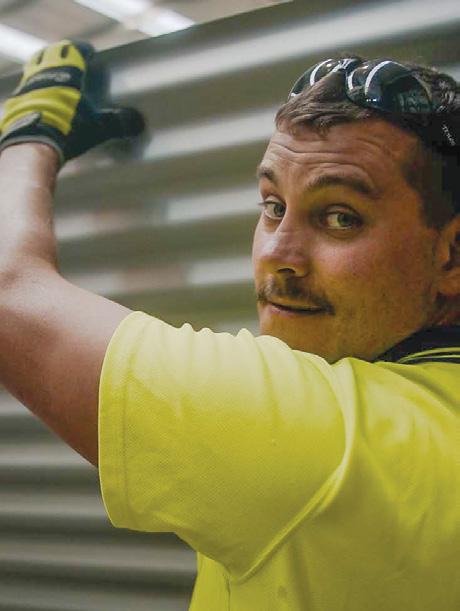
for renters to move to more affordable accommodation.
Looking ahead, in response to accelerating rents and low vacancy rates, housing investor interest in the market is increasing. Lending figures to September 2023 show that almost half the loans issued for new home construction and residential land purchase are made to housing investors. Significantly, housing investors are also out-borrowing owner occupiers and taking larger loans on average in several important segments, including residential land purchase, home renovation and new dwelling purchase.
Over time, it is expected that strong pressures in the rental market will force more high-density home-building projects into the sphere of financial viability. As a result, high-density home building is likely to expand significantly over the medium term.
Non-residential building activity performed strongly during COVID-19 but has declined in recent months. Areas including health
and education building, which depend on public funding, are flourishing.
Office building faces a decline with high vacancy rates and depressed rents making the business case for new stock unappealing to builders and investors. Industrial building work prospered during COVID-19, but activity looks to have peaked, and the volume is likely to decrease in coming years.
The volume of civil and engineering construction during the June 2023 quarter is estimated to have increased by 17.8 per cent. The scale of expansion was very considerable when it came to both public sector (+16.5 per cent) and private sector (+18.8 per cent) projects.
Major transport infrastructure projects are the biggest source of growth in this part of the market, but work related to resources and the expansion of renewable energy generation capacity is also significant.
Australian Bureau of Statistics (ABS) figures indicate the total value of building and construction work done over the year to September 2023 was $280.3 billion – an amount equivalent to 10.7 per cent of Australia’s Gross Domestic Production (GDP).
The economic impacts identified in this submission only capture the direct benefits of activity in this sector. Building and construction plays a significant role in expanding Australia’s economic capacity. Housing, new roads, railways, office buildings, factories, shops, warehouses, tourism infrastructure and community infrastructure all allow the economy to flourish.
The industry’s activity provides strong support to other parts of the economy. It is estimated that every $1 million of residential building activity generates $3 million in economic activity. This stems from the high domestic make-up of the industry, including building materials, labour and professional services. A larger capital stock is one of the basic ingredients of economic growth. Much of that is delivered by building and construction.
86 per cent of all jobs are full-time.
The most consistent employer of fulltime workers than any other industry.
(August, 2023)
$77.2 BILLION in wages paid.
(2021–22)
124,440 APPRENTICES are employed in the building and construction industry, accounting for roughly half of the economy’s trade apprentices.
of which 98.7 per cent are small businesses.
(June, 2023)
OVER 262,000
independent contractors typically operate as sole traders or partnerships.
(June, 2023)
57.2%
of businesses turn over less than $200,000 a year. 1.4 per cent of businesses have annual revenues of more than $10 million.
$127.2B
worth of civil and engineering construction done.
(Year to September 2023)
171,000
new home starts 63 per cent detached dwellings.
(Year to June 2023)
2,930
new units of public sector housing commenced.
(Year to September 2023)
The volume of residential building work peaked at $74.9 billion during 2021–2022. Master Builders anticipates that activity will bottom out at $63.3 billion in 2023–2024. The recovery that follows will be particularly pronounced in the higherdensity home building segment.
However, detached house building will also fare well. From an expected trough of about 170,000 during 2023–2024, Master Builders projects that new home starts will peak at almost 242,000 in 2026–2027.
Overall, residential building activity is anticipated to expand steadily, reaching $80.8 billion in 2026–2027 and rising to $85.9 billion in 2027–2028, the final year of the forecast horizon.
In 2022–2023, total building and construction activity across Australia is estimated to have expanded modestly, bringing the value of the market to $226.4
billion. Other than residential building, 2023–2024 will focus on transport and social infrastructure projects.
New home building is expected to start growing again just as the infrastructure
wave passes. Altogether, Master Builders anticipates that the volume of building and construction activity will peak at $246.2 billion during 2026–2027 before easing the following year.

Non-residential building activity is likely to hit a peak during 2023–2024 when $54.27 billion of work is carried out. From there, Master Builders anticipates activity to fall to $51.4 billion in 2026–2027 with another dip bringing the size of the market to $51.01 billion in 2027–2028. Industrial building projects are likely to see the sharpest drop with retail and commercial building activity also set to decrease.
There will, however, be more work in social and community infrastructure where the public sector contribution to major projects like hospitals will be substantial.
During 2022–2023, work was estimated to total $103.17 billion. The forecast is for activity to peak at $124.33 billion during 2024–2025. Resource and major transport infrastructure projects will do much of the lifting. From there, it is anticipated the value will decline to $114.0 billion in 2026–2027 before retreating to $106.42 billion in 2027–2028, the final year of the forecast horizon.
Resources
Recreation
When it comes to productivity, the construction industry has been going nowhere for over a decade. Labour productivity in our industry has fallen in seven of the past nine years. This means that 18 per cent less work is getting done per hour worked in our industry compared with 2013-14. This is an alarming pace of reverse.
It matters because deteriorating productivity slows down the delivery of new homes, hospitals and schools. It means that the final cost of all types of building and construction work ends up being much higher than it needs to be. Most importantly, substandard productivity in our industry hurts living standards because many of the buildings and infrastructure that we need so badly never end up getting built at all.
Productivity relates to how effectively our industry converts inputs like labour and materials into final outputs in the form of buildings and infrastructure. If we look at what happened in 2022-23, one of the ironies is that our industry’s output actually rose by a creditable 3.7 per cent during the year. The problem is that securing this gain involved using 3.9 per cent more work hours. In other words, labour inputs rose more quickly than output did – a bad productivity outcome.
There are lots of ways in which we can drive better productivity outcomes in
the future. Key to this is flexibility: our construction businesses must have a broad suite of options and choices with respect to how they run their operations and interact with employees and subcontractors. Imposing more restrictions in this area will shut off avenues of potential productivity improvement and narrow the scope for new ideas to be implemented.
Labour shortages remain the biggest source of cost pressures and disruption for the industry. Labour shortages impact the final cost and timeline of new homes and infrastructure.
The tight labour market has forced wages to accelerate in a way that has not been seen in decades: in the September 2023 quarter, average hourly wages across the economy rose by 1.3 per cent. This was the largest increase for any quarter since records began in 1997.
While labour shortages are stark, the Government is also developing more stringent building regulations and unnecessary overreaching industrial relations laws, which will serve to restrict movement of or drive workers from this industry.
To the relief of most in the building and construction industry, building materials prices have continued to stabilise over the 2023–2024 financial year.
Overall, building material costs were largely unchanged during the September 2023 quarter – the first time since COVID-19 that prices did not increase in a quarter. Timber and steel prices have dropped while cement, concrete and ceramic prices accelerated as a result of the heavy use of thermal energy in the production processes.
However, the rapid increase in the cost of materials over the last few years has added more pressure to profit margins for building and construction businesses.
ALL MATERIALS USED IN HOUSE BUILDING: ANNUAL PRICE CHANGE IN AUSTRALIA UP TO SEPTEMBER 2023 (%)
A
new home building milestones, 1984 to 2023
AUSTRALIA: NEW HOME BUILDING MILESTONES, 1984 TO 2023 (MOVING ANNUAL TOTAL)
Over recent years, the delivery of the new homes we desperately need has been obstructed by the combination of labour shortages, broken supply chains and other pandemic-related restrictions.
This is on top of the already formidable set of impediments in the form of planning delays, insufficient land release and red tape.
The average build time for a new detached house was less than nine months during the pandemic. However, this increased to 11.7 months in 2022–2023.
For apartments, the delays have also been significant. In 2018–19 the average build time was 24.5 months. Two years later, the average apartment took 30.6 months to build from approval to completion. Apartment build times have since dropped back, but at 28.8 months in 2022–2023 they are still much slower than prior to the COVID-19 pandemic.
AUSTRALIA: AVERAGE TIME FROM APPROVAL TO COMPLETION FOR NEW HOUSES TO 2022–23 (NUMBER OF MONTHS)
AUSTRALIA: AVERAGE TIME FROM APPROVAL TO COMPLETION FOR APARTMENTS TO 2022–23 (NUMBER OF MONTHS)
Insolvency numbers remain high. This is the result of unanticipated escalations in the cost of labour and materials at a time when so many businesses were locked into fixed-price contracts.
The industry experienced its highest-ever monthly total during August 2023, with over 300 construction businesses entering external administration.
Overall, the industry has remained resilient. Latest ABS data on entry and exits for 2022–2023 shows the number of building and construction businesses shrunk by only 0.1 per cent despite a record-high year of corporate insolvencies.
There were fewer insolvencies during September and October. During October 2023, building and construction accounted for over a quarter of insolvencies compared to over a third in earlier months.
Master Builders anticipates that building and construction insolvencies may decrease over the remainder of this financial year as businesses have worked through the bulk of their lossmaking contracts.
The Government has proposed and passed a variety of workplace reforms. Some have a significant impact on the construction industry both directly and indirectly.
Increasing the costs and risks for businesses while also reducing the productivity of workers is in direct contradiction to other focus areas for the Government which has been outlined in the submission.
The Fair Work Amendment Closing Loopholes Bill is riddled with complex, unclear and costly changes that ultimately reduce labour productivity and drive people out of the industry.
The Bill fails to account for the unique way building and construction work is performed and places unnecessary restrictions on the way people work, including independent contractors and subcontractors.
These arrangements are not ‘loopholes’ but are lawful, longstanding, and they are central to how building works are undertaken both domestically and internationally.
Government and public sector entities, including the Australian Taxation Office (ATO), must play a role in safeguarding the financial viability of the industry through practices including fairer risk sharing in contract design and allowing flexibility when it comes to the payment of taxes, charges and other costs.
For the otherwise vibrant and innovative residential building sector, it simply means more disputes, higher costs, lower productivity and fewer small residential builders, tradies and specialist contractors – all in return for higher construction costs and less new homes for Australians.
Astrong and flexible industrial relations system underpins a competitive, modern and productive economy.
Master Builders supports policies that promote safer and more productive workplaces, but also encourages governments to consider the broader consequences of legislative and regulatory changes. Independent contracting is critical to the industry’s conventional structure and successful execution of work, and the Government must safeguard its rights.
The current industrial relations reform agenda raises concerns about the potential benefits for workplaces, and a commonsense, practical approach is needed with a focus on quality over quantity of legislation and regulation.
Balancing minimum conditions for workers with equal rights for employers while promoting job creation is crucial, and any legislation and regulation should be clear and simple to understand, reducing confusion and complexity for businesses. Following the abolition of the Australian Building and Construction Commission (ABCC), Government must re-establish an industry-specific regulator and ensure ongoing resourcing.
Building and construction work is contractor-based, making the industry uniquely susceptible to disruption and delay pressures. It continues to have a culture of industrial disputation disproportionate to other sectors.
Master Builders understands the principle that workplace laws should not be different by sector, but the reality is different. Until the industryspecific problems and culture are addressed, there is no option but to have industry-specific workplace rules and oversight.
It is not uncommon for Government to implement industry or occupation specific rules and regulations to fix problems. For example, the current Fair Work Act contains very different rules for outworkers in the textile, clothing, and footwear sectors. The cost to Government to restore the ABCC would be $88 million per year across the forward estimates period.

› Abandon all changes negatively impacting the building and construction industry in the Fair Work Amendment Closing Loopholes Bill. Government should avoid unnecessary restrictions on the way people work, including the right to be an independent contractor and for employer and employees to implement work arrangements that suit their needs – not the needs and unreasonable demands of unions.
› Preserve freedom of association laws and avoids any change that gives unions more say or more rights than ordinary everyday workers, and make sure right of entry rules are strengthened and properly enforced.
› Recognise the needs for small business and encourage them to take on new workers.
› Improve bargaining laws to help workers and businesses quickly and effectively put in place arrangements without ineffective red-tape and lengthy delays.
› Reflect that employers and employees are the two most important parts of an employment relationship.
› Be fair and simple to reduce disputation and enhance compliance.
› Include appropriate and effective consequences for those who breach laws.
› Promote the effective operation of competitive market forces and fair competition.
› Preserve and strengthen fundamental economic principles that underpin a free, stable and productive economy.
Recognise the importance of an industry specific-regulator
› Re-establish the ABCC or similar regulatory body for the building and construction industry.
› The Government must conduct a detailed examination of the impacts on the industry arising from the decision to abolish the ABCC. This review should be separate and distinct from the planned statutory review of the Secure Jobs, Better Pay Act and Closing Loopholes Bill, and be conducted by an independent chair. The review should enable persons to provide evidence and information in a manner that prevents them from being subject to any recrimination or adverse consequence as a result of contributing to the review. The review should include an assessment of the additional costs to taxpayers associated with delivering Government-funded infrastructure in an environment without industryspecific industrial relations laws and a dedicated regulator. Master Builders estimates that $2 million should be set aside for this comprehensive and independent review.
Appropriate resourcing for the Fair Work Commission and Fair Work Ombudsman
› In the absence of restoring the ABCC, Government should establish a dedicated Building and Construction Division within the Office of the Fair Work Ombudsman. Additional resources should be made available to this Division for training, field work, proactive site visits and a rapid response team. Master Builders estimates that a minimum of $20 million per year be allocated across the forward estimates for this purpose.
› Government must fund the development of additional resources and guidance materials made for, and in consultation with, industry regarding any requisite changes to industrial laws and modern awards.
› Where relevant, funding should also be allocated for additional resources and development of guidance materials for (and in consultation with) business regarding any changes following passage of the Fair Work Legislation Amendment ‘Closing Loopholes’ Act 2023 or any further elements of the Fair Work Legislation Amendment Closing Loopholes Bill
› Newly allocated funding to develop, in consultation with industry, improved on-line modern award guidance tools for business.
Australia’s struggles with housing affordability have persisted for decades due to a lack of supply keeping up with demand.
Whether through mortgage repayments or rents, housing costs are a substantial share of most household incomes. That is why housing affordability conditions have such a major impact on the wellbeing of so many Australian families.
Poor housing affordability outcomes also make Australia a less attractive destination for workers from overseas. For an economy that will depend so much on foreign labour in the coming decades, this is problematic.
The building and construction industry has a major role to play in creating better housing affordability over the years ahead.
The National Housing Accord (the Accord), to which Master Builders is an enthusiastic signatory, involves an ambitious target of delivering 1.2 million new homes over the five years to 30 June 2029. Meeting and sustaining this volume of output would represent success in the decades-long struggle to match supply with demand.
Australia has never delivered 1.2 million new homes over a five-year period. The closest was during 2014–2018 when a total of 1.1 million new dwellings were commenced.
Master Builders forecasts indicates that output will fall short of targets. Over the five years from 2023–2024 to 2027–2028, it is forecast that 1.04 million new home starts will take place.
This is not only due to industry shortages and pressures. Latest ABS data shows that just over 945,000 new homes received approval over the five years to October 2023. This volume is more than 20 per cent lower than what is required to meet the Accord targets.
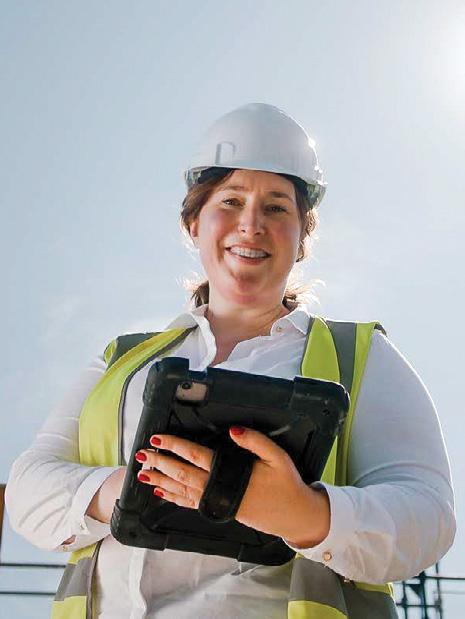
To meet housing demand and targets, it is imperative that Government policy interventions and spending are effective and do not constrain capacity to deliver. With over $3.5 trillion in assets, Australia’s superannuation funds have an impact on the housing scheme. Even if a relatively small portion of superannuation fund resources were directed into new housing and supporting infrastructure, the consequences would be significant for the flow of new home building.
The involvement of superannuation funds and other institutional investors in housing has been peripheral because the risk profile of this investment class compares poorly with other asset classes given the financial returns available. Institutional funding will only flow once this fundamental difficulty is addressed.
The Interim National Housing Supply and Affordability Council made 11 recommendations to help attract institutional investment that are supported by Master Builders and should be considered further.
Taxes, charges and levies
› Current incentives regarding negative gearing and the capital gains tax (CGT) discount have the effect of dampening rental costs and expanding the supply of rental accommodation. They should remain in place.
› No principal residences should be subject to any additional taxes (like CGT).
› Foreign investment should be leveraged in a way that expands the supply of new homes as well as associated infrastructure. All special charges, taxes and levies imposed on foreign investors (mostly at state and territory level) should be waived for transactions which support new home building activity or infrastructure development.
Communities
› Government should roll out measures that help expand the stock of new homes in regional areas so that migrant labour inflows can be accommodated more readily.
› Continue community-, city- and regionalfocused infrastructure funding programs through genuine partnerships across levels of government and with industry. Embed and test housing targets more effectively in these programs.
Improve institutional investment in housing
› Improve planning consistency for build to rent; and reviewing planning arrangements and land availability across jurisdictions.
› Establish housing targets and offering states and territories incentives to meet them.
› Improve data availability.
› Review superannuation regulations so they do not disincentivise investment in housing.
› Address market gaps in long-term debt financing that may limit institutional investment in housing.
› Support institutional investment in the social and community housing sector, including through a proposed social and affordable housing asset aggregator.
Net Zero
› All levels of government should consider developing a nationally consistent approach for Minimum Energy Efficiency rental requirements subject to further consultation with industry stakeholders.
› Ensure that the introduction of regulatory settings for more liveable and energy efficient homes are workable, affordable and effective.
› The Federal Government’s commitment to delivering 40,000 new social and affordable homes to 7-Stars or the state/territory equivalent is the start of the process of improvement for new dwellings for this type of housing stock.
› Governments should commit to achieving 5-star NatHERS by 2030 in the 319,800 existing state/territory public and community housing dwellings (including Indigenous housing).
› Increasing the required NatHERS ratings also increases the importance of the allotment orientation and the siting of a building. Land use planning requirements for developments should be designed to contribute to and be assessed for energy efficiency outcomes.
› To offset the cost of transition, governments are offering consumers low-cost finance to upgrade homes and banks are developing green finance products. There are mixed views about the effectiveness of these schemes. The success or otherwise of these incentives needs to be closely evaluated as they progress. The taxation system could be used more effectively to offset electrification costs and the transition to net zero.
› In the regulatory change environment, Government needs to shift its focus to renewable energy connection and capacity as well as improving performance of existing homes. Existing homes make up approximately 14 per cent of Australia’s emissions and new homes have already done much of the heavy lifting.
› Financial payments from the Federal Government to the states and territories should be linked to how much progress they achieve in boosting the supply of new housing. In particular, their performance with respect to planning reform, taxes and charges imposed on new home building, transparency, accountability and the improvement of data collection should be taken into account.
› Spending allocations in future federal budgets must comprehensively support Housing Australia in delivering on its mandate.
› Banks and other lenders have a responsibility to keep mortgage finance accessible to those wishing to move from renting to owning their home. Similarly, competitive conditions in the provision of insurance, legal and other services used by homebuyers must be regulated in a way that produces optimal pricing and quality outcomes for consumers. The federal budget must ensure sufficient resourcing for relevant agencies to enforce competitive conditions.
› Resources must be provided to allow the delivery of an effective National Housing and Homelessness Plan that deals with the challenges in delivering affordable housing options for all Australians.
› Expand the size of Housing Future Fund capital investment to $20 billion.
› All levels of government should commit to redirect one per cent of development taxes and charges to social and affordable housing.
Infrastructure is one of the key building blocks of productivity. Against the backdrop of a growing population, more roads, bridges and railways are needed, as well as an expanded capacity to create and distribute key utilities like electricity, water and digital information.
A bigger stock of infrastructure connects people and businesses more effectively and can be a source of productivity gains. From the Government’s perspective, well-targeted infrastructure investment can be appealing: it lasts a long time and it provides a real boost to living standards and economic performance.
› Ensure that a rolling 10-year forward pipeline of infrastructure work of at least $125 billion (in 2021–2022 prices) is always in place.
› Continue community, city and regional focused infrastructure funding programs through genuine partnerships across levels of government and with industry. Embed and test housing targets more effectively in these programs.
› Ensure adequate resourcing for a Federal Government-maintained ‘reserve list’ of building and infrastructure projects that can be activated quickly in the event of sudden or severe downturns in private demand for building and construction work.
› With respect to procurement, the federal budget should allocate resources and put in place policy settings to ensure that small businesses are not precluded from tendering for contracts with Federal Government and other public entities.
› Resourcing should also be provided to ensure that the risk exposure and administrative burden for smaller businesses is minimised when entering building and construction contracts with Government and public entities.
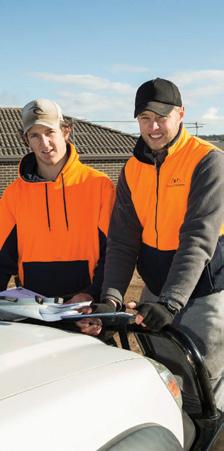
The building and construction industry is comprised of a large number of small businesses. This structure brings with it great flexibility, and a sense of connection with communities around the country. However, small-scale businesses are also vulnerable in different ways. The lack of ancillary support means that paperwork, regulation, and administrative obligations can be a huge source of stress for the people running these businesses.
Amidst increasing materials costs, labour shortages, rising interest rates, disruptions and delays, the industry faces new challenges every day. These conditions have seen a significant increase in insolvencies and business shutdowns.
› There is an opportunity for Housing Australia-supported projects to lead the way with a more sustainable model of risk sharing with building and construction businesses involved in the procurement process.
› Government must offer flexibility in its contractual dealings with building and construction companies whose operations have been hampered by cost spikes, labour shortages and other supply chain complications.
› Resources should be made available to Federal Government entities, including the ATO, in order to facilitate a sensitive approach to the recovery of debt from businesses experiencing difficulties in their operating environment.
› Government procurement and standard form contracting arrangements should not penalise contractors for costs and delays beyond their reasonable control.
In the year to June 2023, a total of 23,297 new building and construction apprenticeships were completed with a further 41,552 apprentices and trainees commencing. At the end of June 2023, 122,677 construction industry apprentices were in training.
The Australian workforce, however, is facing significant shortages in areas including building and construction. According to the most recent Skills Priority List prepared by the National Skills Commission, 47 per cent of jobs within the Technicians and Trade Workers ANZSCO group were in shortage in 2022. Builders, building inspectors, electricians, estimators, tilers, cabinetmakers, scaffolders, riggers, steel workers, crane chasers and excavator operators, among others, are all on the national skills shortage list and have a strong or moderate future demand.
At a time when Australia is trying to meet ambitious housing and efficiency targets, the building and construction workforce needs more support than ever before.
By the end of 2026, the Australian construction workforce must attract more
› Increase the number and value of apprentice wage subsidies for employers to incentivise commencements and offset high supervisory costs in the first year of an apprenticeship. Apply a 30 per cent first year subsidy, followed by 10 per cent in each of the following years.
› Provide financial incentives to apprentices to assist with the increasing cost of living and costs associated with purchasing the tools and materials required to complete an apprenticeship.
› Provide attractive wage and financial subsidies for apprentices over the age
than 480,000 new entrants to the industry. This does not include the huge number of specialist workers who will be required to meet net zero and other sustainability targets by 2050 and beyond, nor the Accord. In a workforce built on long-term learning and professional development, the idea that existing tradespeople will simply retrain to join the transformation workforce is fraught. Learning and perfecting a trade is a long-term commitment that is not easily replaced or transferred.
There is huge opportunity for diverse workers in the building and construction industry, but there simply are not enough people.
There are a number of workforce sources that can be encouraged into the building and construction industry. These include but are not limited to apprentices,
migrants, women, people with a disability and people 45 years and older.
The apprentice completion rate for building and construction related trades at TAFE is around 50 per cent. At nonprofit Registered Training Organisations (RTOs) it is higher and at Master Builders Associations RTOs around the country, it is even higher again.
Looking at completion per centages might imply a heartening story, but when the number of people commencing apprenticeships is declining1, the story changes. With the phasing out of COVID-19 subsidies and supports, the number of people commencing is not enough to meet Australia’s building and construction needs.
of 45 to incentivise them to trades and remove financial barriers that act as a deterrent to this cohort.
› Invest in careers education in the early years of high school, with a focus on the different styles of learning available in the tertiary sector, as well as encouraging work experience and ‘try a trade’ experiences to help manage the expectations of prospective apprentices and their parents.
› Fund the development of ‘come and try’ trade programs, leaning on the value of virtual reality in giving prospective
students an understanding of what they could expect from a trade career.
› Examine the apprenticeship system to provide better support at the times during the apprenticeship journey that are most important to retention – the initial commencement and at the end of the first year.
› Develop an apprentice commencement and retention strategy to improve the outcomes of the apprenticeship system.
› Lead a national campaign to dispel the idea that vocational education is subpar to higher education.
1 NCVER (1 August 2023) Apprentices and trainees in-training and completions remain strong at https://www.ncver.edu.au/news-and-events/media-releases/apprentices-and-trainees-in-training-and-completions-remain-strong
Skilled migrants represent a vital source of new members of the labour force. However, their entry is impeded by issues including long visa processing times, restrictive regulation, lack of recognition of overseas qualifications and difficulties securing housing upon arrival.
The Migration Strategy released by the Government on 11 December goes some way to addressing these issues, However, additional trade and mutual recognition agreements are required to recognise
› Ensure the multi-year planning model for permanent migration proposed in the Migration Strategy looks to the long-term (at least 10 years) with a view to keeping migration levels consistent with Australia’s future needs.
› Jobs and Skills Australia must work closely with industry to determine where there are skills shortages that warrant inclusion on the list that will be used to inform which occupations are eligible for new Skills in Demand visas. Industry input to this process will be vital to ensuring workforce needs are met.
› Skills recognition should be reviewed, in particular, Government must look to countries with comparable or better qualifications frameworks than Australia’s and waive the requirement for a skills recognition assessment for qualified tradespeople migrating from those jurisdictions.
› Mutual Recognition and Trade Agreements should be used more widely to allow migrants with comparable or better trade qualifications who fill skills shortages easy access to Australian visas, without requiring skills assessment.
international qualifications and incentivise skilled migrants to the workforce. Further subsidies are also required.
By way of example, the Government of Western Australia recently launched the Construction Visa Subsidy Program2 to support construction business fill the demand for a skilled workforce by providing grant payments of up to $10,000 to eligible Western Australian employers and independent skilled migrants.
Programs like these incentivise employers to look to skilled migration to boost their workforce, as well as encourage skilled migrants to the region.
Master Builders recognises the additional strain population growth through migration puts on the economy, housing supply and infrastructure in the short term. However, the long-term benefit of attracting skilled migrants to Australia is invaluable.
› Government must develop a strategy to ensure skilled migrant tradespeople can still access appropriate visas with short turnaround times even if the occupation is not in national shortage. Rather, there may be state and territory or regional shortages that need to be filled and there must be a mechanism in place to accommodate this.
› All labour market testing requirements should be removed, especially for the Skills in Demand visa streams.
› Create a National Construction Visa Subsidy Program similar to that in Western Australia to attract and retain skilled migrants to construction roles in Australia.
› Ensure that in holding private Vocational Education and Training providers accountable for their delivery of education to international students, policies do not inadvertently negatively impact providers that are operating correctly and lawfully.
› When amending pathways to permanent residency that allow greater mobility between roles and employers, Government must strike a careful balance
between the needs of the migrant worker and the employer.
› Expand eligibility for the graduate visa and graduate visa extension to all Australian Qualifications Framework Certificate III and above qualifications to address acute workforce shortages and improve economic outcomes.
› Pilot an apprentice visa pathway for relevant occupations as a mechanism to address projected workforce shortages in occupations unable to attract sufficient numbers of Australians.
› The fee structures for trade and skills assessment are exorbitant and in many cases prohibitive. They should be reviewed and reduced and any worker with a comparable or better trade qualification should be exempt from assessment.
› In cases where English language standards are assessed for visa applications, thoughtful consideration must be given to the level of proficiency required as it relates to a particular profession.
Traditionally, building and construction have been male dominated, and today men continue to hold the majority of roles.
In 2023, women make up 14.5 per cent of the industry’s total workforce and 2.7 per cent of building trades. Those numbers are increasing year on year. Of those currently in construction apprenticeships or traineeships, approximately 5 per cent are women.
Female participation in the industry has many benefits. It lifts productivity, boosts the economy, facilitates financial independence, assists in developing an inclusive and diverse culture and meets the much-needed skills shortages the building and construction industry is facing. It also provides women with long-term and financially viable career paths that previously may not have been an option for them.
There are various barriers for women in the building and construction industry, including those related to workplace culture and work-life balance.
› Continue funding Women Building Australia to address the gender imbalance in the male dominated construction industry by improving awareness of pathways, occupations and careers; supporting new female entrants into the industry; providing training and support to female-led businesses; and addressing unacceptable behaviour through education and a bullying and harassment hotline.
› Government must fund and commit to programs that:
› Provide mentoring, networking and support
Initiatives including more flexible and cheaper childcare arrangements, carers leave and improvements to workplace culture are needed.
In 2017 Master Builders developed the Women Building Australia program which was expanded in 2020. The program exists to support women in the building and construction industry, provide guidance, resources, mentorship and a network. It aims to attract the best workers regardless
of gender by promoting opportunities for women and their employers.
Women Building Australia is principally delivered through a national mentoring program which provides women with access to support, encouragement and advice from experienced individuals through a virtual or face-to-face mentoring relationship. Women Building Australia has been hugely successful in supporting women in building and construction.
› Better promote building and construction careers to young women of early high school age
› Provide parents with a comprehensive understanding of what a building and construction career might look like for their daughter
› Take male counterparts along on the journey to female inclusion.
› More research must be commissioned on female participation in the industry that can underpin policy and funding decisions. While there are some valuable insights in this space, more can be
done to truly understand what attracts and deters women from building and construction.
› Government must seek to ensure that there is significant funding directed towards programs for young women, career advisors and parents that removes the bias towards university pathways and highlights for them the rewarding, long-term and well-paid career they could have in building and construction.
Although the tax system is a valuable source of financing for public services, taxes, can have a significant impact on economic activity. Tax can be a roadblock when it comes to home building, and it inflates the final cost of owning the buildings that are completed.
Fortunately, the taxation system can skew the balance between costs and benefits in a way that promotes better outcomes.
› Enhanced depreciation allowances should be provided to nonresidential building work financed by the private sector that is shown to boost productivity. This includes but is not limited to education, IT, distribution, agricultural, industrial and commercial projects.
› The taxation system could be used more effectively to offset electrification costs and the transition to net zero. The current design of the taxation system means that the financial incentives for making improvements to rental accommodation are very small, with capital works only deductible over a 40-year horizon. Some ways this could be remedied is by:
› providing more favourable tax treatment to capital spending targeted at improving the quality and performance of rental stock for capital works which enhance the energy efficiency and accessibility of homes on the rental market; and
› treating the cost of energy efficiency upgrades to rental properties as an expense that can be claimed as an immediate tax deduction for negative gearing purposes.
› Current arrangements around negative gearing and the CGT discount attract participation from domestic investors and should be retained in their current forms. Moves to curtail these features of the tax system would result in less accommodation being made available to the rental market.
› All principal private residences are currently exempt from CGT and other forms of taxation. To ensure housing stock is used optimally, this needs to remain the case.
› There is great potential for foreign investment to be leveraged in a way that expands the supply of new homes as well as associated infrastructure. Accordingly, all special charges, tax and levies imposed upon foreign investors (mostly at state and territory level) should be waived for any transactions which support new home building activity or the infrastructure development.
› Incentives to business, particularly small business, including tax breaks for productivity enhancing investment in digital and IT systems; and more generous treatment of capital building works.
› Extend cuts to company tax for businesses over $50 million turnover.
› Better tax incentives to offset the cost of energy performance upgrades for private rental properties should be considered. For example, the cost of energy efficiency upgrades to rental properties could be treated as an expense that can be claimed as an immediate tax deduction for negative gearing purposes.
Regulation is a vital component of the building and construction industry. Effective regulatory frameworks support and protect businesses and customers. One in six Australian businesses are in the building and construction industry. The majority of them are small businesses.
The amount and extent of regulation imposed on the industry tends to lose sight of the people who are running these businesses. Some mandatory regulation restricts the way in which businesses can operate, which in turn has an impact on productivity. It makes projects more expensive, take longer to complete and effectively hinders the way buildings and infrastructure can be delivered.
The frequency with which mandatory regulations are modified or added in an ever-changing regulatory framework means small business is always on the back foot when it comes to responding to and
› Make access to all mandatory international and Australian standards free.
› The cost burden of the introduction of regulation – particularly relating to the net zero transformation – should be offset through grants and subsidies.
› Government must engage a review of the NCC and ABCB to determine whether they are fit for purpose and enhance productivity or whether restructuring and redevelopment is required.
› Implement a de-regulation agenda to remove superfluous regulatory requirements and make a meaningful impact to productivity.
› Provide a system for better checks and balances when additional or amended
implementing requirements. For example, the three-year cycle of the National Construction Code (NCC) means that by the time one iteration is finalised, rolled out, integrated in training packages or put on the Australian Qualifications Framework, delivered and implemented on site, a new iteration is commencing.
To alleviate regulatory change pressures, the Government needs to make regulatory frameworks that are mandatory, freely available to access. In particular, all Australian and international standards that are legislated or mandated for use must be available for free to anyone required to implement them. Placing this important content behind paywalls makes complying with mandatory regulation expensive and in some cases impossible. It sets people in the building and construction industry up to fail in their regulatory responsibilities.
The functionality of the NCC and its interaction with state and territory legislative frameworks must be reviewed as well as the operation of the Australian Building Codes Board (ABCB) to determine if they remain fit for purpose in serving the building and construction industry. Focus should be on whether the way in which regulation is designed, developed and reviewed is hindering the development of high-quality, fit for purpose building regulation and productivity.
regulation is proposed to determine its need, impact and what alternatives could be considered to achieve the desired outcome.
› Any future regulatory changes must be analysed to determine the total aggregate cost of regulation in the event of their introduction, rather than just the marginal cost of the proposed regulations.
› Regulatory transition to better quality, energy efficient, resilient, accessible housing needs appropriate risk mitigation measures developed and provision of free content for industry and consumer education. Reasonable transition periods for implementation of building code reforms also need to be provided.
› Improved access and reliability of regulation through clear and concise communication of regulatory outcomes.
› More budgetary resources need to be provided to facilitate the transfer of all building product chain responsibilities away from the builders using them.

Omesh Jethwani, Government Projects & Programs, engages in an insightful dialogue with Tamika Smith, the Founding Director of My Bella Casa, Executive Chair of Top 100 Women, and Founder of TSR Property Solutions.
The conversation delves into Tamika’s professional journey, notable achievements, and her perspectives on the construction sector, emphasising her dedication to social and affordable housing and women’s empowerment in the industry.
Tamika’s remarkable accolades include being named the “Most Influential Woman in Construction” by Built International, securing the title of ‘Entrepreneur Woman of the Year,’ and earning a spot in the Top 20 Under 40 Queensland Entrepreneurs for 2023 by the Courier-Mail. Widely recognised and respected, Tamika is a businesswoman and entrepreneur committed to establishing commercially viable enterprises with a strong social conscience, particularly in delivering social and affordable housing.
Your journey in the construction industry has been diverse, from founding TSR Property Solutions to My Bella Casa. Can you share the inspiration behind venturing into the development and offsite construction sectors, specifically focusing on social and affordable housing projects? Everything was deeply connected with the problems I set out to solve; like a puzzle, I was driven to solve the bigger affordable housing problem. Throughout my journey,
I would begin by solving one part and then relying on others to connect the other; I felt a profound responsibility to deliver, execute, and get on with it. You either have accountability or you have excuses; however, with great awareness comes great responsibility. The more I understood how, as a country, we continued to deliver short-term solutions, the more I felt compelled not to march to the beat of the drum that only lasted four years in line with election promises, but to create my own. Getting to the root of the housing problem and a long-term solution meant thinking outside the box. We have significant expectations of political leaders to be our saviour. Still, I began to question whether we had it wrong by giving our community’s responsibility to people with a four-year vision. The same problem kept occurring with the same decisions made, and as I sat at the tables, I realised we repeated the same short-term strategies merely to win elections. None of this put people first! The more I saw and learned, the more I found
it impossible to stay seated. I dealt with some of the largest institutional investors. However, I would still take the call from the 80-year-old crying in the middle of the night, saying, “I’ve been given your number; can you help me?”
The journey to get here has been challenging, but it built the foundations of the humanitarian and philanthropist I would become. I could not wish away all the roads that hurt me when they forged me into who I am today. But through these chapters, I learnt humility. I was no less worthy when I had nothing and once slept in tents.
Through these experiences, I see value within a person regardless of what they have, whether a little or a lot; who was I to become another ignorant leader who dismissed my responsibility?
Behind every homeless person we judge is a mirror of ourselves. I do not believe in thinking we are so perfect that we cannot fall on hard times; most of us do; in fact, all
of us do. But we are conditioned to hide those experiences to present the ultimate perfection. The people I deal with are no different from you and me; they have often experienced great pain, and judging them is not our place. I used to admire the hard businessman/woman, perfect exterior, and untouchable appearance; however, now I admire people with enough compassion to be kind and lead anyway.
In our sector, it is all too easy to be the epitome of ‘tough’, showing no emotion at all. It is far easier to become the person who shuts off; it is much harder to be open, not judge, and have compassion with those we would too quickly disassociate with.
I began by working with housing providers and servicing the affordable housing sector in the development space. However, upon working more within the regions, the next gap identified was the cost of construction for the most in-demand on these wait lists: one- and two-bedroom dwellings. There was such inconsistency with the quality of modular housing that I’d then spend the next two years researching the best methodology and product solution. I created it within My Bella Casa when I couldn’t find it — all Australian-made.
You work with various organisations nationally as an Executive Director, Chair, Advisor, and Consultant. How do you collaborate with private and public entities to achieve social and affordable housing development goals?
My whole life’s purpose has been building the bridge between the private sector and its ability to deliver with people with good intentions. When I began, it was as if they spoke two different languages; to a degree, they still do. But through my education and my experience, I connected the two, and that, unknowingly, for the past 15 years. For the development of my own company, it meant taking on a new perspective as an Impact Group. ‘Profit for purpose’ with a view of educating others that, yes, it can be done! We can deliver projects that stack up financially and leave a significant impact.
I have advised both the private sector and governments to draft strategies for governments, private sectors, community sectors and even correctional facilities.
I have met with some of the most significant Funds, and it’s been fascinating to see how few had a proper social mandate despite their advertisements. There is a misconception that to have an impact, you are in some way leaving
money on the table! To address this problem and honestly look at the scale, you need to begin with your perception and perhaps your understanding because these do not need to be mutually exclusive! I encourage anyone investing, particularly in significant funds, to truly understand how their money is making an impactful return and a financial one because it is possible to have both! If you do not have visibility over this when investing, then your money could be better spent with a fund that considers both!
You’ve mentioned the importance of a long-term view in addressing housing issues. Could you elaborate on the strategies you believe are essential for creating sustainable solutions to the housing crisis and ensuring people have homes forever?
The Government has often invested in strategies that do not consider an exit strategy. To entertain this within the private sector would be ludacris; we have more accountability than to say – whoops, blame the last guy in power!
But sitting at the tables, I still see the same thing invested in short-term strategies. Suddenly, it becomes incredibly political; one side believes in building bigger governments, and the other engages the private sector directly. But the bigger picture and politics aside, is this truly about the people? And what is more efficient when we look at the math?
We have ignorantly handed our trust and dependency to governments to solve this problem, and when you step back, you question why we did that when their interest will always be party first. Anyone can call a press conference and look like a hero, but the game sits behind the donors of our political system, who funds them to get into power, and that is ultimately who they serve first! And whilst I respect the game, I do not appreciate the lack of accountability and skin in the game when an old lady calls me crying with no place to sleep at night when the short-term plays all fall apart. I have always believed you are measured by the things you walk past and pretend not to see. Having a voice is only sometimes comfortable, but someone needs to speak for those people, and I take that role with tremendous responsibility.
Your recognition as the “Most Influential Woman in Construction” and ‘Entrepreneur Woman of the Year’ speaks volumes about your impact. How do you see your role in reshaping the construction sector, especially
in delivering socially responsible projects?
Construction in itself has never known leadership through vulnerability. It has known brutality, it has known tough lessons, and it has a reputation for being ruthless! Once upon a time, I used to respect that leader who was unattainable in perfection, untouchable in demeanour and showed no glimpse into a person’s compassion. Now, I realise that’s easy! Being an asshole is easy! Being kind, showing up authentically, bringing your whole self to be kind and truthful, that’s immensely hard!
Getting your ego out of the way and realising that most people are projecting their stuff onto you to see people for who they are is only acquired with time, wisdom, and great experience. Starting on boards early on in my career, I was often the youngest by 50 years, and working on the front line of construction, there is nothing I haven’t seen. But back then, if a 70-year-old man was screaming at me, it hurt. Now, I know a child desperate to be heard and validated, perhaps like he never was, and that helps me meet people where they are. When you are comfortable and safe enough in yourself, you show up differently. It doesn’t mean you tolerate anything less than you deserve, but you can approach things more calmly and less protectively.
Construction knows to fight fire with fire. I hold no less strength in my approach but will always do my best to greet people with compassion and perspective. I don’t need to show up to every fight to validate my worth or protect myself. I’m good in myself, which helps me become a better leader, an open one, respecting that all people are worthy; some lack the love and ability to communicate. It’s those that need it the most.
Could you share more about your involvement in the #istandforkelly initiative and how it reflects your commitment to social impact within the construction sector?
I began this initiative when I met the late Kelly Wilkinson’s three children within days of her alleged murder by her husband. Moving into their aunt and uncle’s home with five children of their own, I was incredibly inspired by their courage to take on the kids without question. Now, with eight kids under one three-bedroom roof and a $1000/week grocery bill, I began to worry about the practicalities. But worse than that, I was concerned with the children’s view of the world if we merely

said, “Such a sad story,” and did nothing.
At such tender ages, they didn’t do anything to deserve what happened, and when a 3-year-old was holding my hand and asking for her Mum, my heart just broke. And in that moment, I said we’re not leaving these kids. I phoned the office, instructed the team to prepare a social media post, and launched the #Istandforkelly, building a new beginning for Kelly’s children, now eight.
The funny thing about leadership is that it requires people to be brazen. But it also needs people who stop caring what others think of you and are prepared to take on the job to get it done. This experience did that for me; suddenly, I didn’t care what anybody thought. I was clear in my objective: “We are building these kids a home, and if nothing else, we’re going to show them in tragic times that there are incredibly kind people as well. Most importantly, knowing a community, a sector, was behind them, and they were not alone.”
Within 24 hours, Metricon had generously stood up to take on the build, as did all the incredible contractors and mountains of people who spared their time to make
this a reality. Within 48 hours, we had the land too! The most gracious experience was seeing a sector entirely of 90% men, a sector that is traditionally known for its ruthlessness, stand up to say, Tamika, we are behind you to make this happen when they heard what happened.
We handed the home over last year in an incredibly moving moment for all involved. The kids hand-made a card to thank everyone who helped build their home, especially at such a challenging time for the industry. But I learned a lot about leadership; you need someone crazy enough to stand up with force and make it happen, and I am incredibly grateful that everyone suddenly had a vehicle to contribute what they could.
We had trades of all types showing up, some big, some small, and no less appreciated in size. Everyone gave what they could, but I was incredibly proud that the company where I began my career came to the party without question or even being asked. Every major home builder has my number, so showing so much initiative demonstrates Metricon’s company’s values and forever impacts the kids’ lives.
Being shortlisted for Queenslander of the Year is a remarkable achievement. How do you leverage your influence to advocate for long-term solutions to the housing crisis and address housing waitlists in key regions? I call a spade a spade because I believe somebody has to! This accompanies the notion that sometimes you must have the courage to be disliked! I work on the idea that people should come first, and if I doubt my direct approach, I remember who I stand for. I will work with political leaders, but I feel a moral obligation to assist the vulnerable members of our community who do not have hundreds of millions of dollars to champion their cause but need our help the most.
While waiting for others to come to the party, I decided to get on with the job. For a long time, we saw this housing crisis coming. When you go down the rabbit hole to understand the intentionally non-transparent data, I became increasingly concerned with the short-term perspective of subsidies and almost the heroism of small numbers when I could clearly articulate the net position.
With NRAS (a federally funded initiative that filled a subsidy gap for ten years) concluding, the demand is growing, and housing prices are soaring. We are incredibly behind where we were in housing ten years ago. We see media storms of progress, but the net position is never revealed because it doesn’t sell the pretty picture, but I call that the truth! We are being distracted by the raw position with another ribbon cutting for three homes when we may have just sold off five and lost 10 NRAS homes. I watch and think, “You’re still negative 12; sit down!”
In consolidating the knowledge from working within the community sector for over ten years and the products in My Bella Casa, we are focussed on delivering housing in the regions under a long-term plan to serve key workers and with a plan to ensure that the community has the housing needed, converting into social and affordable housing.
In such a short life, I couldn’t waste any more time waiting and wishing for people to demonstrate accountability, so I decided to get on with it!
I am from the country, so it helps me






A much-respected voice in Australian sports media, Liz Ellis has forged a career as a thoughtful advocate for women’s sport and a thoughtprovoking commentator on the wider sporting and social landscape.



understand the issues often faced in the regions and how we can deliver the
As the Executive Chair of Top 100 Women, you’ve created a platform supporting and educating women in construction. What motivated you to establish this initiative, and how do you envision its impact on fostering diversity and inclusivity within the
I began the Top 100 Women post, standing in a Supreme Court post seeking to get paid by a builder who was folding. It was hard to fathom how conditioned the sector was to this being ‘normal.’ I couldn’t consciously accept that any part of this was ok. So, I set up an online community to provide our members with support for their career development and progression along the way. I also champion the issues for men, noting the suicide rates, so I try to ensure within the business I founded that we are putting people first – period. This is a global company where individuals can access discounted courses, education and services such as
legal support to provide them with the knowledge and guidance to survive and succeed. Every year, we still announce 100 Women, big and small, to recognise their impact within the sector and now to our male champions. I fully acknowledge that in an industry of 90% men, we need everyone at the table and cannot exclude anyone to support the sector and its people better.
With your extensive experience, what advice would you give aspiring entrepreneurs and professionals looking to positively impact the construction industry, particularly in social and affordable housing?
Please don’t wait for someone to give you permission; it doesn’t come!
When the entire sector is distracted with 30,000 homes, we need to get on with it as the private sector!
Every business I have created is, in some way, shape or form, an impact business. Money comes, money goes, especially in construction. This sector can be brutal. But don’t wait; this is a short life. Do something
great whilst you are here.
What future projects or initiatives are you excited about, and how do you envision your continued contributions to the construction sector’s positive transformation?
With the consolidation of the knowledge I have acquired in the community sector added to the development and the offsite construction piece, I’m only just getting started! I have spent 15 years in this sector, and my vision has only come together after what feels like a lifetime of work. Now it’s time to execute; watch this space!
We have solutions ready for institutional organisations to commence the change in providing long term outcomes in the regions for key workers and infrastructure projects. Police, Health, Military, Nurses, Employment Agencies in addition to agriculture, meat processing and horticulture. By housing the essential services it helps reduce pressure on housing availability across all tiers and keeps the countries key sectors moving forward.
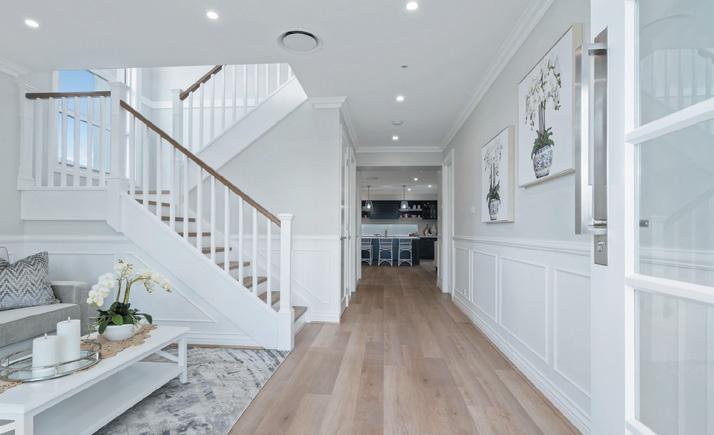

Could you share your background and how you began your journey as a Tradies Wellness and Personal Development Coach
After serving as an apprentice, I was qualified as a carpenter in Scotland at sixteen. I relocated to Australia at 26, climbing the ranks from carpenter to site foreman and eventually to site manager. I have witnessed the various challenges and nuances inherent in the construction industry, particularly concerning men’s mental health and wellness. However, it was not until I encountered my mental health struggles following the loss of a couple of friends that I truly began to question my place in the industry and whether I wanted to continue down that path. Turning to personal development and life coaching to cope with my personal challenges, I discovered insights and techniques never openly discussed on construction sites during my twenty years as an apprentice and tradesman. Recognising the value of these lessons from my professional and personal experiences, I felt compelled to share them with my colleagues on-site.
What inspired you to focus on wellness and personal development specifically for tradies?
Many of the lessons I’ve learnt from coaching others and undergoing coaching myself underscore the importance of personal development. Regardless of one’s past or aspirations for the future, it
boils down to individual growth—how we think and act. In the construction industry, there is often a prevailing sentiment urging men to toughen up, soldier on, or use the local Aussie phrase “Shell be right”. While this mentality may be suitable for the demands of the job site, I’ve personally experienced the repercussions of carrying these frustrations home and inadvertently taking them out on my family. Sadly, I’ve witnessed many others in similar situations, returning home to a six-pack of beer and their dog because of strained relationships due to unresolved issues from work, which means they have driven their loved ones away.
Consequently, I’ve taken it upon myself to impart some of the hard-earned wisdom I’ve acquired, aiming to spare others from enduring the same struggles. It’s crucial to convey to the guys on site that just because things have always been a certain way doesn’t mean they must remain so. However, effecting change has to come from the individual. This is why personal development is the linchpin for progress.
In your experience, what are some common wellness challenges that tradies face in their profession?
One of the primary issues I often encounter is the neglect of physical health among construction workers, even though our bodies, like the tools we use, are essential for our work. It’s not uncommon to see guys at the servo buying unhealthy foods like pies and energy drinks from the crack
of dawn to power through the day, only to find themselves burnt out later. They arrive home exhausted, lacking the energy to engage in any activities or opting to drown their fatigue at the pub, which inevitably leads to hangovers and impaired performance the next day.
While physical well-being is undoubtedly crucial, I’ve observed a recurring challenge stemming from the generational mindset prevalent in the industry. Many individuals enter the construction field because they’ve witnessed their fathers, uncles, or brothers navigate it with the “toughen up, get on with it” mentality. Undeniably, this mindset is valuable for cultivating the resilience necessary for the demanding nature of our work. However, it’s crucial to recognise that this same approach shouldn’t extend to their mental health or what they’re grappling with internally. Building resilience is essential, but it shouldn’t overshadow the need to address mental health issues and personal struggles effectively.
How do you approach addressing mental health issues that might arise within the tradie community?
Initially, addressing this issue may seem straightforward, yet many Men (especially tradesmen) struggle to take this crucial step. Simply put, it involves initiating conversations about what they are experiencing and how they are feeling. It’s astonishing to see how many people in a single room grapple with similar challenges
yet refrain from discussing them due to fear of being perceived as weak or “crazy”. While the stigma surrounding mental health is gradually improving, there’s still so much to do. While it’s encouraging to see more advocates and increased dialogue about mental health, there’s a pressing need for more proactive measures to support both men and women on construction sites. Less HR box ticking and more action.
Can you share some practical strategies or practices you’ve used to promote physical wellness among tradies?
During my site toolbox talks, I often promote a simple yet effective framework comprising three strategies: Tune In, Check Up, and Reach Out. The concept behind Tune In involves paying attention to your body and mind—acknowledging what you’re feeling and the thoughts running through your head, whether positive or negative, as well as those aches and pains that come with the daily grind of the body onsite.
Check Up is another critical aspect that many men tend to neglect. It’s about prioritising regular visits to the doctor for health checkups or addressing any minor health concerns we often overlook. This includes routine checkups recommended for specific age groups that frequently get postponed.
Lastly, Reach Out emphasises the importance of seeking support when needed. Whether it’s reaching out to a friend, colleague, or professional if you’re struggling or simply extending a hand to someone you notice isn’t quite themselves. Taking the initiative to ask if they’re okay or need someone to talk to can make a significant difference in fostering a supportive environment on-site.
What role does mindset play in the wellness journey for tradespeople, and how do you cultivate a positive mindset?
Mindset plays a crucial role, and maintaining a positive outlook is paramount. Unfortunately, many individuals in the trade industry harbour a negative mindset due to the strenuous nature of the job. It’s common to encounter older tradies who have become entrenched in this negativity. They moan, argue, and express dissatisfaction with their workday in and day out, yet come back day after day and persist in this pattern for years on end, ultimately wondering why their mental health suffers. We all know a grumpy tradie; if you don’t, YOU are that tradie.
However, adopting a positive mindset can make a world of difference. Instead of viewing work as a burden, cultivating gratitude for the trade, the skills acquired, and the income it provides can lead to a profound shift in perspective. By approaching each day with appreciation and acknowledging the opportunities presented by one’s skillset, individuals can find greater fulfilment and enjoyment in their work.
What are some misconceptions about wellness in the trade industry that you aim to debunk through your coaching? One common misconception about wellness is that it’s all “woo woo” and about practices like meditation and connecting with nature, which some perceive as too feminine or weak. However, I aim to shift this perspective by helping individuals understand the deeper aspects of their well-being. Individuals can gain valuable insights into themselves by exploring what triggers them and why they behave in specific ways.
Engaging in wellness practices isn’t about conforming to a particular image but rather about becoming the best version of yourself or improving daily. The tradies can become better fathers, partners, and overall societal contributors by embracing these techniques.
It’s essential to emphasise that neglecting wellness can have serious consequences. Suppose individuals fail to make time for their well-being. In that case, they may find themselves grappling with illness or even facing tragic outcomes such as suicide, which, unfortunately, is becoming more prevalent in our industry. By understanding themselves better and prioritising wellness, individuals can avoid such dire outcomes and lead happier, purposeful lives.
Could you walk us through a success story where your coaching significantly impacted a tradie’s overall wellness and personal growth?
I recently had a client who was a father of three and owned his own business. When his marriage broke down, it sent him into a downward spiral. He struggled to show up for work, often sleeping in and missing out on important jobs. He would overwork himself at other times, leading to a cycle of inconsistency and exhaustion. However, after a few sessions together, we were able to identify his purpose and address the issues surrounding his relationship breakdown.
By confronting his emotions and facing his problems head-on, he found himself in
a more productive space at work and in his personal life with his children. Initially, he had been avoiding dealing with his problems, hoping they would disappear. But as we uncovered and addressed each issue, he realised they were more manageable than he had feared. This tendency to bury one’s head in the sand is common among men, but it only allows problems to fester and grow larger over time.
However, by confronting fears and tackling problems directly, individuals can better understand their situation and develop effective strategies for resolution. Ultimately, facing these challenges lightens the burden and paves the way for a more fulfilling and balanced life.
How do you tailor wellness plans to accommodate tradies’ physical demands and schedules?
Most of my coaching sessions occur after hours, as most tradies are on site until at least 5 PM. These sessions primarily involve one-on-one calls conducted either via phone or video call. However, I also provide the guys with skills and techniques to help them manage stress and anxiety throughout the day, which they can easily implement from wherever they are: site office, Ute or even the dunny.
They can utilise these strategies comfortably in their office or their truck on a job site. Taking just 10 minutes can allow them to practice these techniques and effectively manage their well-being amidst their busy schedules. We are helping them go about their day with a clear head and function with clarity.
Are there specific personal development tools or techniques that you find particularly beneficial for tradespeople?
Box breathing is one of the essential techniques I advocate, which has personally benefited me both on-site and at home. This method involves sitting and consciously regulating one’s breathing patterns and inhaling for four seconds, holding the breath for four seconds, exhaling for four seconds, and then holding the breath out for four seconds. By repeating this cycle, individuals can manage anxiety, alleviate stress, and lower their heart rate. The US Navy Seals champion it.
The process is simple: individuals can effectively quiet the mind and bring themselves into the present moment by focusing solely on the breath. This conscious breathing decreases stress

levels and lowers the heart rate, fostering a sense of connection with oneself here and now. For individuals like site managers or foremen who juggle multiple responsibilities and require clear thinking, box breathing provides mental clarity and enables effective multitasking.
How can tradies balance their professional responsibilities with prioritising their wellness and personal development?
As tradesmen, many of us tend to identify deeply with our trade, viewing it as more than just a job. Consequently, we commonly bring work home, answer emails, and take phone calls even after hours. However, tradesmen must establish boundaries to maintain a healthy work-life balance.
Setting boundaries ensures a distinct period when work-related matters don’t encroach upon our personal lives. This is essential for nurturing relationships with partners and children and carving out time for ourselves. After long days of working 12 to 16-hour shifts, it’s vital to switch off and unwind for at least a few hours. Even for those without families at home, prioritising wellness—whether physical or mental health—requires stepping away from thoughts of work and recharge.
face in the future, such as when starting their own business or raising a family. By imparting these lessons and providing them with tools for success in handling this and themselves, we can better prepare apprentices for the challenges they may encounter throughout their careers.
Another one I often tell young apprentices when they first start. Especially the ones that want to quit or wait to complete their qualification or apprenticeship. It’s only four years of your life. Get the qualification and skill set, And it will take you anywhere. You may never use it, but at least if you have that trade qualification, you have it. And you can pick up a job anywhere around the world.
How do you foresee the future of wellness and personal development evolving within the tradie community, and what changes would you like to see?

I’m a firm believer in the strategy. “Leave your boots and sh%t at the door.” So, at the end of the day, you kick off your work boots at the door or the garage just before you go home. Take 5 minutes. Leave everything from the site at the site, the arguments, the stresses, whatever it may be, so that when you go through the door, you present for your family. Likewise, if there are any issues at home in the morning, you don’t take them to work or out on the guys’ site. It’s a simple but effective strategy.
What advice would you offer to young tradies entering the industry about maintaining their physical and mental health?
One crucial lesson that apprentices should learn is to avoid falling into the trap of relying on quick, convenient foods. It’s common for tradesmen to prioritise convenience due to the fastpaced nature of the job, but prioritising balanced, nutritious meals can significantly benefit them in dealing with the physical and mental demands of the job site. As new tradespeople, apprentices may feel invincible, much like we all did at that stage. However, it’s essential to teach them about the potential stress they may
We are making positive strides in opening up conversations about mental health and wellness within the trades industry. However, there is still a significant distance to go. While numerous courses and legislations are in place, many of these initiatives often feel like merely checkbox exercises for HR departments, needing more authentic proactive engagement with the boots-on-the-ground tradies.
Organisations like TIACS and Health in Trades, providing free counselling services, are making remarkable contributions to support blue-collar workers during challenging times. These services are invaluable for helping individuals navigate difficult periods when they struggle to see clearly.
In addition to counselling services, I advocate for introducing personal development programs at an individual level for tradespeople. By understanding their triggers and learning how to overcome them, individuals can enhance their skills as tradesmen and become better fathers, husbands, and sons. Building resilience is crucial in an industry as demanding as construction, where thick skin and mental fortitude are essential. However, it’s equally important to recognise that while the work may be challenging, it doesn’t have to be insurmountable. Open communication and support systems can make a significant difference in improving mental well-being within the trades industry.


30 key initiatives designed to shift the dial
Building Commission NSW releases a new, first-of-itskind report comprehensively examining the status of women in the construction industry today.
Few people will be surprised to hear that discrimination, sexual harassment and limited career opportunities continue to hinder the advancement of women in the construction industry in NSW. Or, that construction remains one of the most resistantly male-dominated industries, with women representing only 13% of the sector. Sadly, these disturbing traits have been with us for decades across NSW.
What might surprise and alarm many in the sector is just how profoundly entrenched these issues are, as confirmed in our new Building Commission NSW Women in Construction Report. Among its key results, our research reveals 53% of women in the industry today report experiencing sexual harassment, with 15% considering leaving the profession over the past year as a result. These statistics
are even more alarming among small and medium size companies, which was a major focus of the study. It’s clear that all of us – families, companies, governments, agencies – need to urgently work together if we are to attract and retain women to the industry. It benefits everyone to do so.
I felt that I was constantly working too hard and pushing myself so I could prove I’m as good as the other apprentices.”
— Female apprentice
Multiple other survey results were equally concerning. Of note, 54% of women in the industry across NSW say they have been excluded or isolated because of their gender over the past 12 months and 44% experienced discrimination.
Backing this up, 42% of male employers say they believe onsite work to be too physically demanding for women. And, in a reflection of poor workplace culture across the industry, 49% of women say they avoid using the bathroom at work due to inadequate toilet facilities. Sadly, 44% believe there is a lack of promotion or career opportunities for them in the sector. Our findings are based on one of the largest surveys on this topic conducted in NSW, including feedback from more than 1,792 online survey respondents, 36 individual interviews and nine focus groups. They confirm beyond doubt the systemic barriers and entrenched biases that persist within our industry.
The Women In Construction Report focuses in particular on the less-researched small and medium sized tier 2 and 3 construction companies, which make up a crucial 80% of the industry. Effecting change among this cohort is a key area of concern and one requiring considerable effort.
We know that while long-held ideas about gender roles and gender abilities persist across the industry, many of these issues are even more pronounced in SMEs.
Our report confirms that 71% of women who’ve left jobs in tier 2 and 3 SMEs in the past year have experienced genderbased discrimination, and one in two have experienced sexual harassment. Overt and covert sexism is not uncommon.
• Around 50% of women in the industry experience sexual harassment.
Laying the Foundation: Reshaping stereotypes from the cradle Frustratingly, we know that gender stereotypes about the use of tools and the construction industry continue to be ingrained into Australian children from the earliest ages – typically, well before they enter primary or high school.
This directly and negatively affects any young girl’s willingness to explore and follow construction-related programs.
We know that negative views of vocational courses are not uncommon, with many high schools actively promoting university courses and the number of students attaining tertiary entry as a key marketing tool. This obviously works against girls considering a trade in the construction industry.
We know that high schools still tend to steer girls towards occupations
• 71% of women in small and medium enterprises (SMEs) report discrimination.
• 42% of male employers in SMEs believe construction work is too physically demanding for women compared to 13% of female employers.
• 46% of SMEs employ less than 5% women.
• 35% of SMEs employ no female employees.
Despite this, the survey does offer glimmers of hope. More than half those surveyed who aren’t in the industry say they would consider it, with the numbers roughly equal for women (58%) and men (54%). Encouragingly, more than one in four women who’ve left the industry say they’d like to return and almost half say they would return if issues such as worklife balance improved.
To attract these women back, to retain the ones already there and encourage more into the industry, we urgently need to work together to do better. Our report identifies and clearly sets out ways in which we can do so. We’ve recommended 30 major initiatives designed to reset the dial. By advocating for the strategic hiring of women, implementing inclusive policies and strengthening ties with educational institutions to promote and support construction careers among women, we can kick off an overdue shift.
The smaller the business, the larger the challenge
When it comes to hands-on roles, many male employers continue to question women’s ability to work in the industry. More than 40% of male employers believe the work is too physically demanding for women, compared to 13% of female employers. And others are reluctant to hire women due to fears of inappropriate workplace behaviour and ensuing legal ramifications.
Disappointingly, we’ve discovered that 81% per cent of SMEs employ five or less female employees. Just under 50% of all SMEs employ fewer than 5% women, and more than one in three don’t employ any women at all. With tier 1 and 2 businesses making up 80% of regional construction companies, opportunities for women outside metropolitan areas are even more problematic or virtually non-existent. If they do get into the industry, almost half consider leaving because of a lack of promotion or career opportunities.

traditionally dominated by women, such as early childhood education and hairdressing.
Our report explores ways to ensure more effort is invested in primary and high schools to reshape these attitudes, to encourage girls to sign up for these programs or courses, and to nurture their skills and interests.
You either have to drive your car to the nearest servo or Maccas and use their toilet. But a lot of traffic controllers don’t drive (as there are) a lot of immigrant workers.”
— Onsite female
Helping them realise this passion or interest early will help ensure kids who are suited to the industry are less likely to be diverted due to greater exposure to other industries and professions. Part of this is adequately addressing the raft of concerns young women have about entering the construction industry. Our survey confirms young women fear they’ll be treated
differently because of their gender (51%), they’ll experience sexual harassment (41%), they’ll be paid less (41%), will suffer a lack of promotion or career opportunities (41%), won’t be supported (38%), will have difficulty balancing work and life (35%) and will be bullied (32%).
One of the most pressing issues affecting all women across the industry is a lack of work-life balance, especially as a 6-day work week tends to be the norm. More than 70% of female survey respondents working in tier 1 companies said they feel forced to choose between their career and personal life, compared to 58% of tier 2 and 3 respondents. It’s the number one reason women leave the industry.
Other issues impacting women’s experiences in the industry and decision to leave include sexual harassment and overt sexism, which are not uncommon, long and inconvenient working hours, company or team culture, inadequate toilet facilities, and a lack of career opportunities.
While men and women reported many of the same issues, almost twice as many women cited the latter reason for leaving as men –44% compared to 25%.
We found that having policies that support worklife balance, reasonable hours and mental well-being, which affect both women and men in the industry, are increasingly essential for all construction companies –and benefit all employers and employees.
Building the New: If Not Now, When — Recommendations for Change
take bold steps and collectively commit to dismantle the barriers that are negatively impacting the progress of women. We don’t want women to achieve this at the expense of their male counterparts, but in lockstep with them.
Which is why we’ve developed a series of 30 initiatives based on the findings of this report and designed to build on what is and isn’t working well in the industry.
They include a mix of short, medium and long-term strategies that government, industry and individual businesses should consider if we are to narrow or close the gender gap, meet labour needs for skilled construction workers, and effect positive cultural change industry-wide.
regional areas wanting to grow their skills, and mature aged students juggling multiple responsibilities.
Changing how government projects and tendering conditions are set up to accommodate a 5-day week is another proposal promising real improvements in work-life balance for those in the industry.
A bunch of guys came over to tell me how impressed they were with the work I was doing – well that just gives me the knowledge that people are watching me harder and waiting for me to have slip-ups. That in itself can be pretty rough.”
— Experienced, unqualified onsite female
The initiatives embrace a whole of lifecycle – or cradle to grave – approach, with programs ranging from those designed to help capture young girls’ interest and
Shifting the Dial — Key Recommendations:
Collaboration and a willingness to work together to create a stronger, more diverse and engaged construction industry are key to activating these programs and maximising their success. We all have a role to play. Individuals, families and communities, educators, government and industry. By improving the industry for women, we’ll improve it for everyone – and create a stronger, more prosperous community, economy and future workforce.
• Allow students to take a Certificate 11 in Construction during school.
• Provide one-off programs in primary and high schools to help young girls learn how to build.
• Create training courses about overt and covert sexism.
• Change the way schools talk to students about trades and vocational study vs university.
• Create a free job board for employers who are interested in employing women.
• Introduce more options for flexible learning requiring less face-toface classroom hours.
• Change how government contracts and tender conditions are set up to allow a 5-day week.
• Share examples of businesses operating a 5-day week to help others do the same.
• Improve data sharing between government agencies to ensure a common understanding of issues and collaborative problem-solving.
The underrepresentation of women in the industry, and the unacceptable experiences they currently report, speak for the urgency with which change is required. With a projected shortfall of 100,000 skilled construction workers by 2030, and a growing demand for more housing, the need to increase the numbers of women entering and happily staying in the industry has never been greater.
We know that the number of women in the industry nationally declined from 17 per cent in 2006 to 12.9 per cent in 2020. We also know that to reverse this, we must
exposure to construction and the handson use of tools, through to plans to better support career development for women in the industry, along with ways to improve work-life balance to retain them.
Five recommendations focus specifically on increasing young girls’ contact and connections to the industry. Others designed to better support women once they’re in the industry include more options for flexible learning that require less faceto-face hours in the classroom. This will be particularly helpful for women in rural and

The research report and key findings are available at nsw.gov.au/women-inconstruction-report.
For more information on the NSW Government’s Women in Construction program visit Women in Construction | NSW Government
Vanessa Carmody-Smith Building Commission NSW Executive Director Policy & Programs
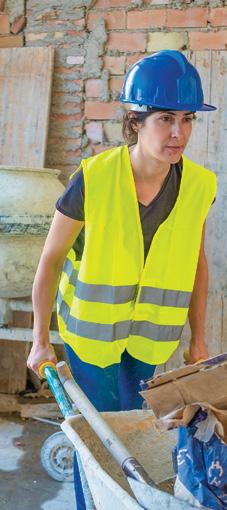
Natalie* is a 38-year-old concreter from Greater Sydney.
She got into construction during high school because she preferred being active and outside to being inside the classroom. A supportive career advisor helped her get a work placement as a concrete labourer – she did try hairdressing but didn’t enjoy it much – with the company hiring her after year 10.
Although her employer was supportive, she faced discrimination and sexist jokes from male colleagues. She didn’t complain because she was the first female hired by her employer, even when some comments made her doubt her self-worth. She also had to buy her own tools and PPE.
After the company went broke, she struggled to find another job, as she was considered a risk. Despite having skills and experience, she had no official qualifications and had to rely on referrals from people she knew.
When she got another job, she felt like
she had to prove herself and work harder than her male colleagues. She experienced sexual harassment but didn’t report it to keep her job.
She thought about leaving the industry because of burnout, high expectations, sexual harassment, concerns about her physical capabilities in the long term and the instability in the construction sector. Eventually she left without a plan for what’s next.
What does Natalie want? To experience the camaraderie her male colleagues seem to have; to feel a sense of belonging and support; to be recognised for the hard work she puts in; to get equal pay; to be taken seriously; and to use her experience to get good work.
* This experience is fictionalised and the story is based on an amalgamation of real examples gained through our research and associated discussions.






On 13 February 2024, the international technical committee (ISO TC283) responsible for the design and development of ISO 45004 OH&S Performance Evaluation, gained 98% international ballot approval.
ISO 45004 is intended to help organizations to effectively monitor, measure, analyse and evaluate occupational health and safety (OH&S) performance. OH&S performance evaluation includes the processes that the organization uses to assess the adequacy of activities that are expected to achieve intended results. OH&S performance is normally evaluated by using a combination of processes and sources of information such as incident investigations, inspections, audits, qualitative and quantitative indicators, culture surveys and interviews.
Background:
ISO TC283 is also the international committee responsible for Occupational Health and Safety Management. ISO held a meeting in 2015 in Trinidad Tobago for the ongoing development of ISO 45001 OH&S Management Systems. During that meeting the Head of the Swedish delegation, started a conversation about Positive Performance Indicators. This was put on hold until ISO 45001 was published 12 March 2018.
MBA Leads Development of New International Standard:
MBA NSW Executive Officer Safety Housing Technical & Risk, David Solomon (Australia’s International Head of Delegation) was nominated as the CoConvenor of ISO TC283 Working Group responsible for the development of ISO 45004 by Standards Australia National OH&S Committee (SF-001). Being a CoConvenor as opposed to a sole Convenor provides the opportunity to undertake two roles, a) to convene meetings and b) positively contribute towards the development of ISO 45004 content, representing the views of Standards Australia SF-001. Canada was the other nominated Co-Convenor.
The National Committee: Standards Australia OH&S Management
14 March 2024.
Committee SF-001 (Chaired by David Solomon) drafted their own National Standard that was considered for the working draft of ISO 45004. SF-001 used the Hudson Maturity model with the X and Y axis targeting requirements from 45001 when they drafted a National Standard. ISO did not want Australia to have an unfair influence over the drafting of ISO 45004, hence only elements from the National draft were included.
Governance and program:
Standards Australia is governed by a Commonwealth Government policy that is in place that states National Standards should not be developed where international standards can be adopted to avoid duplication. Working Group 4 is responsible for the development and drafting of ISO 45004. This ISO project was scheduled to run 36-months, that commenced October 2020. ISO TC 283 WG4 currently has 96 participants from all over the world.
Focus and detail:
The aim of ISO 45004 is to shift the focus from Lost Time Injuries (LTI’s) to help businesses consider what daily tasks businesses are undertaking and going to be measured and what units of measurement will be used to categorise them, so that the data obtained is more balanced and that it supports and reflects if a building business OH&S performance is effective.
45004 can be used by organisations of all types, regardless of whether they have implemented a formal OH&S management system (see ISO 45001 and ISO 45002). This document provides examples which demonstrate how to evaluate performance to drive continual improvement and support the organisation in achieving its intended results. 45004 recommends a balanced approach based on selection of performance evaluation processes and indicators, with emphasis on proactive (leading) OH&S performance indicators. It recognises that over-emphasis on past performance (lagging) indicators, such as incidence and frequency rates, can undermine efforts to improve OH&S performance.
As every organisation is unique, and
intended results vary, there is not a standardised set of performance evaluation processes or set of indicators that fulfil the needs of all organizations. Therefore, every organisation has to identify performance evaluation processes and indicators to suit its needs.
Effective performance evaluation can help the organisation to demonstrate continual improvement, and therefore may need to be adjusted when the organisation’s performance changes. Effectiveness is the result of selecting the appropriate performance evaluation processes and properly implementing them. When performance evaluation processes are used inappropriately (e.g. in a way that is perceived to blame individuals for system deficiencies), they can produce unintended consequences. The most common of these consequences are discussed in 45004.
If we compare car insurance as an analogy, when applying for an insurance policy, you would be asked the following questions, such as, is your car: parked off street? Garaged? security system in place? security system connected back to base? Those considerations, if implemented all positively contribute to discounts when insurance premiums are calculated, whereas the Building and Construction Industry (BCI) must comply with the WHS Act 2011 and Regulation 2017. Yet all of the governance that is complied with is not taken into account when measuring a building companies OH&S performance. Let alone measured, categorised, measured or determined if its OH&S performance is effective or not.
ISO 45004 is designed to complement ISO 45001 by providing performance evaluation approaches that align with requirements of that standard. 45004 can be used independently, by any organisation, to improve OH&S performance.
David W Solomon (FISQEM) Executive Officer Safety Housing Technical & RiskConvenor ISO TC283 WG4 OH&S Performance Evaluation

Same look. Same feel. Same performance. SYDNEY

Our specialist safety team has a wealth of experience in both the commercial and residential sectors. The team responds to safety related issues and can advise on:
• Site inspections and audits
• Safety procedures and associated documentation
• Safety Management Systems
• Desktop and surveillance auditing
• High Risk Construction Work (HRCW) Safe Work Method Statements (SWMS) templates
• Site Safety Plans
The NSW WHS Regulation 2017 at 309 states: All construction projects (i.e. construction work costing $250,000 or more) must have a written WHS management plan prepared by the Principal Contractor before work on the construction project commences.
Our series of Safety Management systems have been gap-audited by a JAS-ANZ Certification Accreditation Body attaining compliance for the following Safety Management Systems.
• Work, Health & Safety Management System (WHSMS)
• Environmental, Health & Safety Management System (EHSMS)
• Quality, Health & Safety Management System (QHSMS)
• Intergrated Management System (IMS)
SuperSafe is a two-day Building and Construction Industry specific work health and safety training course targeted at construction site-based staff. Including but not limited to construction workers, leading hands, supervisors, foreman, site managers.
• To motivate participants to adopt a systematic, risk management style of management and leadership
• To provide participants with the practical skills needed to be an effective supervisor
• To provide participants with the skills and behaviours to positively affect the safety culture on their jobs
The Master Builders experienced Safety Team can undertake Site Safety Inspections of construction sites to provide:
- A site safety walk to Identify any major WHS vulnerabilities and document solutions
- Provide a formalised inspection report
- Desktop and surveillance auditing
- Advice on:
• Requirements for identification of and removal of asbestos
• Scaffold requirements
• Electrical compliance
• On-site consultation arrangements
• Accident and emergency response procedures
• Site inductions
• Safety Management Systems
• HRCW
• Risk Management
• Safe Work Practices
• SWMS
Sydney Metro — Site locations within the Sydney basin do not incur any travel fees.
Distant Work Travel Time — A set fee is applied to works conducted outside of the Sydney basin for travel time and any travel expenses are charged at cost price.


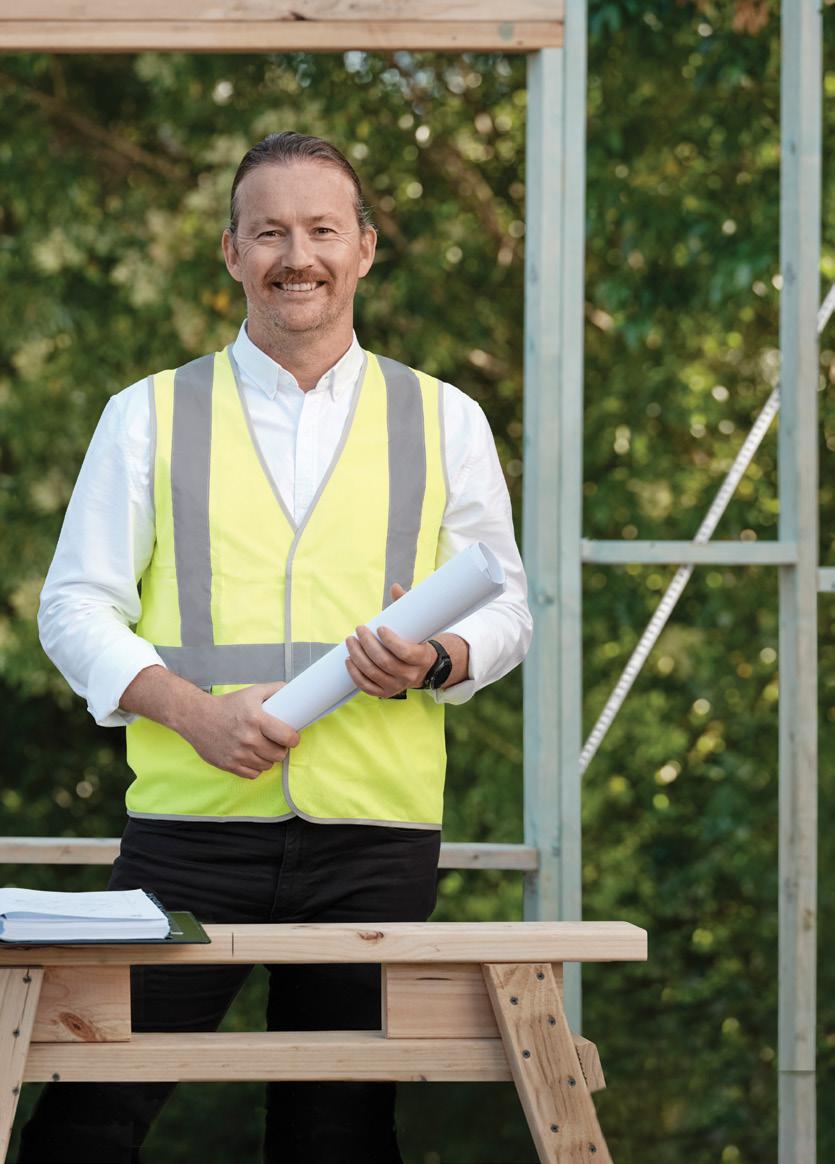

MBA NSW has partnered with researchers from RMIT University, the Australian National University and the Centre for Work Health and Safety NSW to create a digital training tool to help improve communication between young workers and supervisors in construction. This work is being funded by icare NSW under the Injury Prevention in Construction initiative.
The construction industry is facing a serious shortage of skilled workers, threatening its long-term productivity and performance. Yet, completion rates for construction apprenticeships are falling, with national data showing only 54% of trade apprentices commencing in 2017 completed by the end of 2021, and one in three drop out in their first year.1 Having good interpersonal relationships at work
1 NCVER (2022), Completion and attrition rates for apprentices and trainees 2021, NCVER, Adelaide.
has been identified as an important factor in apprentice retention and training program completion.
Positive communication in the workplace not only supports effective learning of skills, but it is also important in creating workplaces in which young workers’ health, safety and wellbeing are protected. Workplace incivility or abusive supervision is harmful to young workers’ psychological health. Moreover, when supervisors are perceived to be unapproachable, young workers are more likely to take safety risks at work. Young workers are already a high-risk group for work-related injury. National data show that between 2016-17 and 2020-21, the number of serious claims (involving total absence from work of one week or more) for Australian apprentices and trainees increased by 41%, even though the number of apprentices and trainees increasing only 13% (Safe Work
Australia, 2023).2 Moreover, 15-24-year-old construction workers are also 2.39 times more likely to die by suicide than young Australian men.3
icare’s General Manager, Segments, Surayez Rahman, said: “Fostering a culture of open and effective communication is vital to maintain safe and healthy workplaces in the construction industry. Our goal is to support innovations that will positively impact the construction industry and particularly young workers and apprentices, who are at more risk of sustaining workplace injuries.”
The training tool developed in this project is a digital role-playing game (RPG) in
2 Safe Work Australia (2023), Snapshot: WHS outcomes for apprentices and trainees, Safe Work Australia Canberra.
3 Australian Institute for Suicide Research and Prevention (2006), Suicide in Queensland’s Commercial Building and Construction Industry, Griffith University Brisbane.

which the player makes communicationbased decisions on a virtual construction site. Players’ decisions affect the outcomes of the game, which may be positive or negative. Every possible outcome in the game is designed to demonstrate the importance of clear and respectful communication between apprentices and their supervisors. The game can be played on a computer or any mobile device, such as a phone or tablet. Within the game, players are able to experiment and learn valuable lessons about how to interact with others in the workplace to achieve positive work health and safety outcomes.
See Figure 1: An example of an apprentice decision in the RPG training tool
Role play is a well-established approach to developing interpersonal skills, including being able to initiate potentially difficult conversations and recognising the emotional impact of an interaction on oneself and others. Digital RPGs can help to improve communication and have been used to train people whose work sometimes involves having difficult conversations (e.g. medical professionals). There are several benefits of using digital game-based training over traditional training approaches. Digital games can be powerful learning tools for young, digitally literate learners, who are accustomed to a media-rich environment for communication and information processing. Moreover, digital game-based learning can create a stronger emotional, cognitive and behavioural connection with training content, thereby increasing participant
3: Characteristics of effective communication and social support.
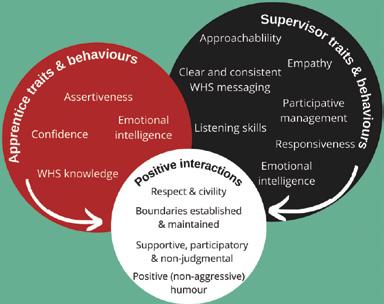
engagement and improving learning outcomes.
The RPG training tool created in this project is based on real life experiences shared by apprentices in the NSW construction industry. Apprentice stories were developed into three scenarios, each of which has its own characters and learning goals. When playing each scenario, participants make communication decisions for both supervisor and apprentice characters, encouraging players to understand communication from the perspective of both roles.
See Figure 2: An example of a supervisor decision in the RPG training tool.
In order to ensure that the RPG effectively addressed end-user needs, it was created using a participatory design approach. During the first stage, 41 interviews were conducted with NSW construction workers (30 with apprentices and 11 with supervisors). These interviews identified characteristics of effective communication for both apprentices and supervisors, shown in the diagram below:
Figure 3: Characteristics of effective communication and social support
The RPG learning goals were based on the traits and behaviours identified in the interviews as being characteristic of effective communication. For example, participants identified that supervisors’ approachability is important for apprentices who may not be confident knowing how to undertake a task safely: “He’s pretty easy to talk to and an approachable sort of a man. A couple of times, when I got confused on safety or just general stuff…he just explains it again, nice and thoroughly.” (Noah, carpentry and joinery apprentice, 20)
Participants also identified respect and civility as critical to creating a work environment in which young workers can learn effectively: “It’s great. Very respectful and helpful of me learning. They are not very angry at me when I get something wrong… they don’t really yell or anything, they just explain what I’ve done wrong and what to do better next time.” (Jackson, male carpentry and joinery apprentice, 17)
Construction apprentices and supervisors were consulted throughout the development of the RPG to ensure the accuracy, relevance and realism of the scenarios. Involving end users from the beginning of the project, right through to the final edits, ensured that the RPG would be useful, relevant and authentic in the Australian construction industry context.
294 apprentices (in both NSW and Victoria) took part in an experiment to test the RPG. At the end of each scenario, apprentices were asked whether they had learned something new and whether they found the content useful. Responses (shown in Figure 4) show that an average of 71% of apprentices said they had learned something new and 81% said they would use the training content in their workplace.
See Figure 4: Apprentices’ assessment of the RPG’s three scenarios
152 apprentices also completed a survey before and after they played the game to see whether there was any change in their communication competence or behaviour. The survey data showed that apprentices were confident in their communication ability before playing the game. However, after they played the game, apprentices indicated that their confidence in communication is significantly more likely to lead them to speak up about safety concerns in the workplace than it was before they played the game, as shown in Figure 5. Additionally, the relationship
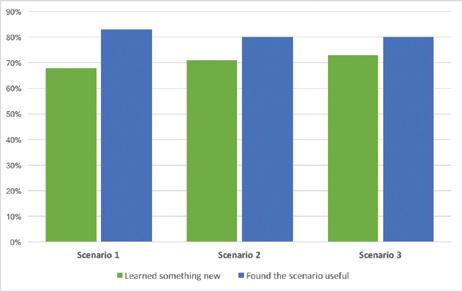
between feeling comfortable talking with their supervisors about issues like taking time off work and apprentices’ mental health was also strengthened by playing the game. These results indicate that the game has a significant positive effect in shaping apprentices’ workplace communication behaviour (speaking up about safety) and mental health by helping them to translate their communication competence into positive communication behaviours.
See Figure 5: The relationship between communication confidence/competence and speaking up about safety before (blue line) and after (green line) playing the RPG
A focus group was also run to test the game with 14 people in supervisory, safety and/or managerial roles. Participants commented on the potential usefulness of the RPG to industry: “We always do an induction for new employees, apprentices and construction managers, and I think that’d be the place for us to do it, before they went to site… So where it sits now it’s really good… I’d take it on straight away, as it is.”
The results of this experiment suggest the RPG is an effective training tool for supporting apprentices and supervisors to develop critical communication skills that are needed to ensure safe, healthy and supportive workplaces. Currently, the research team are conducting interviews with representatives of construction organisations and training bodies to explore how best the RPG can be integrated into industry training programs.
If you would like to hear more about the RPG or participate in these next steps, please contact Jack Clarke (jack.clarke@rmit.edu.au) or Helen Lingard (helen.lingard@rmit.edu.au).
communication confidence/ competence and speaking up about safety before (blue line) and after (green line) playing the RPG.


he NSW Court of Appeal recently found in the case of Owners SP 92450 v JKN Para 1 Pty Limited [2023] NSWCA 114 that builders and developers bear the burden of demonstrating that any loss in rectifying non-compliant cladding is unreasonable.
The Plaintiff was the Owners Corporation (OC) of a 28-storey mixed use development in Parramatta. The Respondents constructed the exterior of the building with aluminium composite panels (ACPs)
On 18 May 2016, Fire and Rescue NSW identified that the ACP cladding was used by the respondent and subsequent testing confirmed it contained more than 30% polyethylene and thus was combustible. It was suggested that remediation measures be conducted to ensure fire compliance. As successor in title, the OC commenced proceedings in the Supreme Court, asserting that the ACPs did not comply with the Building Code of Australia (BCA) and therefore warranted a breach of the statutory warranties under section 18B of the Home Building Act 1989 (NSW) (HBA) because:
• the cladding did not comply with the HBA or ‘any other law’ – this included the requirements of the BCA as it applied on 5 July 2013, being the date to place (respondent) applied for a construction certificate.
• the cladding was not ‘good and suitable material’ because it was combustible; and
• the dwellings were not reasonably fit for occupation due to the fire-retardant properties of the ACP.
The trial judge determined that the ACP cladding did not meet the requirements of the BCA in terms of a ‘deemed to satisfy’ provisions. Additionally, no report from a fire engineer was prepared to support an ‘alternative solution’ as per the BCA.
However, the trial judge denied the OC’s claim for damages due to a lack of sufficient proof that an ‘alternative solution’ was not possible, during any stage of the construction period.
The finding that the builder had not breached the statutory warranties under s18B(1)(b), (c) and (e) of the HBA, was primarily made on basis of the OC’s inability to provide sufficient evidence as to the combustibility rate of the ACP cladding and the extent of the fire risk.
The two main issues on appeal were whether the primary judge had erred in:
1. Finding no breach of s18(1) (c) of the HBA had been established by the installation of the ACPs on the building; and
2. Had the primary judge erred in declining to award reinstatement damages on the basis that the OC had not established an ‘alternative solution could not then or now be performed”.
In overturning the decision of the trial judge, the Court of Appeal found that the ACPs violated the ‘deemed to satisfy’ provisions and the Respondents failed to provide an ‘alternative solution’ before obtaining a construction certificate, resulting in a breach of the BCA and the statutory warranty at section 18B(1) (c).
The Court also awarded damages for
reinstatement and held that it was not necessary for the OC to prove that an alternative solution was not available. While the burden of proof to show non-compliance rested on the OC, the onus of proving unreasonable costs for reinstatement fell on the builder and developer, who were unable to provide sufficient evidence.
The Court of Appeal confirmed that the cladding breached the BCA and statutory warranties and stated that compliance with BCA provisions does not differentiate between substantive and formal breaches. Importantly, the Court found that it was the responsibility of the builder and developer to prove the availability of alternative solutions, which they failed to do.
As a result, the Court ordered the Respondents to pay for the removal and replacement of the non-compliant cladding with non-combustible cladding as defined by the BCA.
The decision clarifies the requirements for proving a breach of the BCA in cases involving combustible cladding. Additionally, it shows the burden of proving that the cost of reinstatement would be unreasonable rests with the builder and/or developer. Such clarification may assist builders, developers and their insurers in preparing for and defending combustible cladding claims and where rectification costs appear unreasonable, inform the scope of evidence required to support that position.
Bryce Richards Executive Lawyer bryce@keystonelawyers.com.au keystonelawyers.com.auMBA Lawyers receives regular enquiries regarding the handling of deposits under the ‘BC4’ fixed-price residential building contract produced by the Master Builders Association of New South Wales.
The deposit is nominated in the contract as a set amount which is taken as an advance payment prior to work commencing under the contract. The builder can request payment of the deposit once:
1. The contract is signed by both the builder and the owner; and
2. A signed copy of the contract is provided to the owner; and
3. Where the contract value is over $20,000, the Home Building Compensation (HBCF) insurance policy has been issued and a copy of the certificate provided to the owner.
A deposit cannot be taken without the HBCF insurance in place.
Under the Home Building Act 1989 (NSW) the maximum amount allowable as a deposit in residential building contracts is 10% of the contract price.
The BC4 can be structured so that the deposit to be paid under the contract is credited off the first or last claim, however the preferred way is where the deposit not included as the first stage claim or progress claim and instead is deducted from the final claim.
The stage claims detailed in Schedule 2 item 4(a) should set out the various stages of work with the value of each stage next to each stage. For example, the first stage should be for the work involved at the commencement of the project, such as site setup, demolition, excavation, with the corresponding dollar amount to be claimed by the builder on 95% completion of that stage.
The stages in the contract should total 100% of the contract price. If there are 10 stages, stages 1 to 10 should add up to the full contract price.
If a 10% deposit is listed as the first “claim”, or is already taken into account in the stage claims, the stages in the contract would only add up to 90% of the contract price.
The BC4 provides at clause 18 (and it is also noted at Schedule 2 item 4(b)) that the deposit is to be deducted from the
final payment. The effect of this term of the contract is that the final claim under the contract should ideally be just above 10% of the contract price (if this is the amount that was taken as the deposit).
For example, if the final claim is 12% of the contract price, when the final claim is made the deposit is deducted and the owner must actually pay 2% of the contract price. This is because they paid the deposit prior to commencement of works as an advance payment which now must be brought into account.
Example:
Contract price: $500,000
Deposit: $50,000
Stage claim schedule as follows:
Claim 1: $60,000
Claim 2: $50,000
Claim 3: $50,000
Claim 4: $40,000
Claim 5: $40,000
Claim 6: $50,000
Claim 7: $50,000
Claim 8: $60,000
Claim 9: $40,000
Final claim: $60,000
TOTAL $500,000
Again, as the deposit was taken prior to commencement of work, it must be brought into account at the end of the project. The final claim is for $60,000 but after deducting the $50,000 deposit from the final claim, the owner is to pay to the builder the balance of $10,000.
This structure ensures that the builder is always 10% ahead and is able to use the deposit to “kickstart” the project and assist with cash flow. It also lowers the exposure of the builder at the end of the project.
Some other contracts (such as the New South Wales Fair Trading home building contract) require the deposit to be deducted from the first stage claim.
The effect of this is that the builder can use the deposit to purchase materials and to assist with the commencement stage of the project, however from completion of the first stage onwards the builder is essentially funding the project. In such circumstances the builder must outlay more of its own funds to progress the works than would otherwise be necessary where the deposit is not deducted until the end.
The structure of the BC4 and its provisions in relation to deposits are designed to protect the builder within the framework of the Home Building Act 1989 (NSW) and its limit on deposits being a maximum of 10% of the contract price.
MBA Lawyers provides advice to members of the Master Builders Association of New South Wales and is available to discuss these issues in more detail: (02) 8586 3517; legal@mbansw.asn.au
Specific legal advice should be sought for individual circumstances.
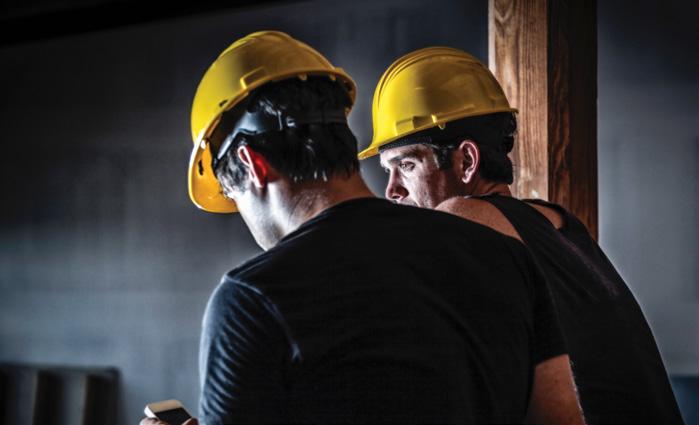
he Albanese Labor Government was elected to power on 21 May 2022, just over two years ago. In that time the Government has fundamentally altered the Australian system of workplace regulation with an almost complete lack of consultation with industry, businesses large and small, independent contractors and sector stakeholders.
The present Government regrettably stands in stark contrast to previous Labor Governments who, while certainly friendly to unions, never turned their backs on business, and more importantly, never forgot that it is the private sector, particularly small business, which does most of the employing in Australia. It will take time for the effects of the
May 2022 Labor wins the 2022 Federal Election.
new laws to be felt, but we believe the results will be increased uncertainty and disputation. What follows below is a high-level summary of where we are now as a result of the changes. Also a brief chronology of the Albanese Government’s main legislative changes prior to February 2024 is in this chart.
July 2022 The Australian Building and Construction Commission (ABCC) 2016 Code is reduced to the “bare legal minimum” effectively neutering the once highly effective building watchdog.
October 2022 The Albanese Government tables the “Secure Jobs Better Pay Bill” in parliament which, when passed into law, abolishes the ABCC and reshapes enterprise bargaining laws to allow for multi-employer bargaining and grant unions greatly enhanced powers around bargaining including;
- rights to strike on an industry-wide basis.
- deciding when workers are allowed to vote on a proposed Enterprise Bargaining Agreement (EBA).
- giving unions the final say on whether or not a proposed EBA will be approved;
- allowing unions to unilaterally initiate bargaining in a workplace; and,
- greater rights to prevent businesses from terminating EBAs
December 2022
February 2023
September 2023
December 2023
Parliament passes the Secure Jobs Better Pay Bill into law.
The ABCC is officially abolished. The construction industry is left without a dedicated regulator for the first time in 30 years.
The Closing Loopholes Bill is tabled in Parliament.
The Closing Loopholes Bill is split in two. Closing Loopholes No 1, passes Parliament, brining into law;
- Same Job Same Pay for Labour Hire and Independent Contractors,
- Powerful new rights for union workplace delegates, including allowing an official of an organisation (with or without an entry permit) to attend a worksite without the requisite 24 hours’ notice if they are accompanying an HSR for safety purposes.
- Wage theft, criminalising inadvertent underpayments and threatening up to 10 years in jail with no requirement for dishonest behaviour on the part of the employer.
February 2024 Closing Loopholes No 2 passes Parliament.
On 12 February 2024 the last tranche of industrial law changes (Fair Work Legislation Amendment (Closing Loopholes No. 2) Bill 2023) was passed by the Parliament. This mean that hundreds of pages of new rules have been added to our already dense workplace relations framework. Master Builders campaigned strongly against the changes, and also lobbied for sensible changes to minimise the effects of the worst parts of the Bill when it was before the Parliament.
Master Builders had some real successes in getting some changes made, most notably the “Opt-Out” power for high paid tradies who wish to remain independent contractors. Overall however, we believe that this remains a bad set of laws for business and workers alike.
Some of the key changes that are effective now are:
• Jump Up Orders. (aka Regulated labour hire arrangement orders) The Fair Work Commission (FWC) can hear “Same Job, Same Pay” claims concerning labour hire and subcontractors. This change has the dire potential to affect sub-contractors and anyone who engages them. The likely result of such orders will be that subcontractors engaged on commercial building sites will be forced to pay their employees in line with the headcontractors’ enterprise agreement. The effect of such orders will be similar to that of the old “contractor” or “jumpup” clauses in pre-ABCC enterprise agreements. These “jump up” orders can be lodged with the FWC and made now, but they will not take effect until 1 November 2024.
• Union workplace delegates rights. The new law contains a slew of new rights for union delegates at all workplaces, and new offences for employers if they fail to deal with delegates properly. These include paid time off for union delegate training (excludes small businesses) and new Right of Entry powers for safety purposes under which a union delegate will no longer need to have a valid rightof-entry permit to access a workplace if they have been invited in by a health and safety representative. (NB, A business that employees fewer than 15
employees is a small business, this does not include irregular casual employees). This is an alarming change that opens the door for safety to be used by union officials as cover to get around the usual right of entry rules. Most concerningly, the new laws mean that any business regardless of size could be forced to have a union delegate, and these delegates will be essentially untouchable.
• Sham contracting. The definition of sham contracting has been watered down to now cover mistakes, inadvertent errors and misclassification of work arrangements. The impact of this change is particularly concerning given additional amendments (outlined below) which make it far more difficult to navigate the employee / independent contractor distinction.
Some of the key changes that start on 1 July 2024 are:
• Right of entry for investigation of suspected underpayments of wages. A union delegate will no longer need to give 24 hours’ notice to enter workplaces to investigate suspected underpayments. One key change made includes a requirement that the FWC must consider whether or not giving the usual notice would hinder an effective investigation of an alleged underpayment.
• Unfair contract disputes. The Fair Work Commission (instead of the Federal Court) is to gain a new jurisdiction to hear unfair contract claims for independent contractors earning below the contractor high income threshold (to be determined by regulation). Master Builders has strong concerns that this change will open the door for union interference in commercial disputes and also result in a loss of protections for independent contractors.
Some of the key changes that start in August 2024 (six months after assent) or an earlier date by proclamation are:
• Casual employment. There is a new definition of ‘casual’ and an employeedriven conversion process to full/ part time employment. There is some tightening of the rules as to how you define ‘casual’ but overall the new laws

will make using casual employment risky as it will be harder to determine whether an employee is legitimately engaged as a casual. Regarding conversion to ongoing employment there will be only one ‘employee-driven’ conversion process by which a casual employee who has worked for at least six months (or 12 months for a small business) can apply to become an ongoing employee. There is also the addition of ‘reasonable business grounds’ for employers to refuse an employee-driven request to convert to ongoing employment.
• FWC to have powers over ‘employee-like’ workers. The FWC is to gain a new jurisdiction to make minimum conditions orders for people engaged through digital platforms (aka gig workers, such as Uber and Deliveroo). However, Master Builders has concerns that this change may capture tradies who use digital platforms. The Government did make some concessions to try and exclude tradies. Master Builders will advise on this area as it progresses.
• Definition of employment. There is a new definition of employment. This is a deliberate move by the Government to reverse the clarity and certainty provided by the High Court of Australia as a result of the (Jamsek and Personnel Contracting) decisions handed down in February 2022 and return to the bad old days of the common law multi-indicia test. As a result of these changes there will now be real uncertainty as to exactly who is an employee versus who is a contractor
Some positive changes were made during the debate over the amendments and as a result, an independent contractor earning above a (yet to be determined) high income threshold can now give notice that they elect to ‘opt out’ of the new definition of employment. The effect of ‘opting out’ is that the new vague definition of employment will not apply – meaning an individual can choose to have their engagement defined by the clearer test established by the High Court.
• Right to Disconnect. There will be a new workplace right for employees to refuse to connect with employers
after hours. This creates a legal right for employees to refuse to monitor, read or respond to contact or attempted contact from their employer outside of their working hours unless the refusal is unreasonable. This will cover things like calls, emails, texts, MS Teams messages and any other contact by an employer after hours that is not reasonable. In determining what is reasonable, FWC will consider things like:
» The reason for the contact or attempted contact;
» how the contact or attempted contact is made and the level of disruption the contact or attempted contact causes the employee;
» the extent to which the employee is compensated to remain available to perform work during the period in which contact or attempted contact is made; or for working additional hours outside of the employee’s ordinary hours of work;
» the nature of the employee’s role and the employee’s level of responsibility;
» the employee’s personal circumstances (including family or caring responsibilities).
A key change that starts on 1 November 2024 is that any “Same Job, Same Pay” Labour hire orders already made by the FWC will take effect.
A key change that starts on 1 January 2025 is that the Criminalisation Of Wage Underpayment Offence commences. The new offence will carry a maximum of 10 years’ imprisonment, and/ or a maximum fine equal to the greater of:
» 3 times the amount of the underpayment, if the court can determine that amount, or,
» for an individual: 5,000 penalty units ($1,565,000); or for a body corporate: 25,000 penalty units ($7,825,000).
This is a high-level summary of the new laws. Members with specific questions are encouraged to contact Master Builders Workplace Relations Department on (02) 8586 3555.


The issue of criminal responsibility for workplace deaths has been a topic of debate in NSW and nationally for many years. Industrial manslaughter laws cover circumstances where either a business or individual are responsible for the death of a person due to negligent or reckless behaviour in the workplace.
In October 2023, the NSW Government announced that it would introduce an industrial manslaughter offence in the first half of 2024, which would carry severe
penalties for serious work health and safety breaches that result in death, that may apply to directors of a given business. The NSW Government has invited submissions from the community, including work health and safety experts, business groups, unions, legal stakeholders and families of people who have been killed at work. The proposed legal amendments are contained in a consultation paper prepared by the Government and it invites feedback on how to best introduce the
new laws and which elements will make up the offence.
This feedback is set to be used to inform the government on key elements to include within the NSW Work Health and Safety Act and any other relevant considerations for introducing an industrial manslaughter offence in NSW.
Members with questions on this issue are encouraged to contact Master Builders Workplace Relations on (02) 8586 3555.

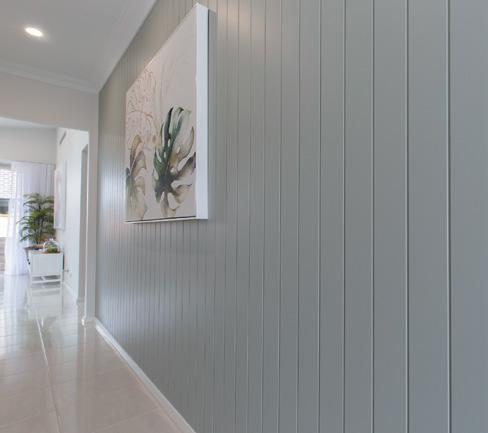


From roof colour to insulation, from appliances to landscaping elements, all the material selections made in a project form a part of the build’s overall sustainability — the outcome.
Master Builders are tasked with the most important objectives; managing client expectations, design intent — and of course budget — all within site parameters and building compliance.
When it comes to achieving or exceeding a 7-star energy rating as part of the National Construction Code requirements, few of these choices offer as much scope for variation and flexibility as the selection and application of window and door systems as a major component of the thermal envelope of the building.
Well specified windows and doors can be the difference between a thermally efficient design which comes in on budget versus an over-engineered, high performing build that can confuse the most experienced specifier and possibly exceed budget –perhaps unnecessarily.
Thermally broken windows have long held the title of one of the most energy efficient solutions by offering the broadest application for use. By insulating the
pathway for thermal transmission through the window frame, it’s a clever way to make the most from the durability of aluminium while reducing its conductivity – but extra components inevitably mean more assembly and a comparatively higher price tag.
So, is there a cost-efficient way to maximise energy gains, while maintaining strength and design flexibility without necessarily turning to thermally broken windows?
That’s a question both asked and answered by leading supplier of aluminium windows and doors in Australia, AWS (Architectural Window Systems).
This fundamental question was asked over 10 years ago and it led to the development of a more cost effective, energy efficient solution which also offers a contemporary design aesthetic in the current market.
Cue ComfortEDGE™
ComfortEDGE is an elegant, doubleglazed solution for residential applications that rivals the energy efficiency of thermally broken products. Its embedded frames provide a sleek design comprising fewer components than thermally broken counterparts, making it a cost-effective,
wholly Australian-made option for Australian projects.
ComfortEDGE recognises that clever design doesn’t have to be complicated, and skilfully minimises the amount of exposed frame by embedding into the timber reveal, insulating against the environment, to improve energy efficiency and thermal comfort.
ComfortEDGE truly is the perfect meeting point of form and functionality. It’s stylish and high performing, with U Values as low as 1.9 — placing you in the best position to meet 7-star energy provisions while keeping your budget on track.
Back to weighing up your options… How will you know if ComfortEDGE is right for your project?
AWS recommends consulting your specification expert early in the design process, taking a holistic approach to build sustainably and to meet energy compliance on budget.
For designers looking to harness the vast possibilities afforded by Australian designed and manufactured architectural windows, give your AWS specifier team member a call and reap the rewards.
AWS 1300 026 189

The
The National Construction Code (NCC) plays a crucial role in ensuring the safety, health, and amenity of buildings in Australia. To enhance compliance with the NCC, two key measures—specifying Australian-made steel building products and conducting product testing according to Australian Standards – can prove instrumental. This feature delves into the significance of these measures in maintaining and elevating construction standards across the Australian building industry.
• Choosing Australian-made steel building products aligns with the broader goal of supporting the domestic industry. A preference for locally sourced materials not only contributes to the national economy but also holds distinct advantages for compliance with the NCC.
• Quality Assurance: Australian-made steel products are subject to stringent quality control measures. These products consistently meet, and often exceed, industry standards, providing a foundation of structural integrity and reliability.
• Traceability: The transparency embedded in the supply chain of Australian-made products facilitates traceability, a critical factor in satisfying the NCC’s stringent requirements, which demand a meticulous understanding of the origins and composition of construction materials.
• Environmental Considerations: Beyond quality, the emphasis on environmentally sustainable practices in locally produced steel aligns seamlessly with the NCC’s commitment to fostering sustainable building practices.
• Timely Delivery: Reduced lead times for Australian-made products contribute significantly to timely project completion — an aspect intricately tied to the NCC’s stringent timelines and requirements.
In tandem with the specification of Australian-made steel products, subjecting materials to thorough product testing

according to Australian Standards emerges as an indispensable step in ensuring compliance with the NCC. This facet delves into the realm of safety, performance, and the durability of building materials.
• Safety Assurance: Rigorous testing, a hallmark of Australian Standards, provides designers with reliable product performance data to inform their structural design removing ambiguity and reducing the risk of structural failures, thus securing occupant safety — a cornerstone of NCC regulations.
• Durability: Product testing scrutinises the durability of materials, aligning seamlessly with the NCC’s emphasis on longevity and resilience in building construction. This aspect not only safeguards investments but also contributes to the sustainability of structures over time.
• Compliance: Meeting the specified Australian Standards inherently ensures compliance with the relevant sections of the NCC. This provides a streamlined and coherent approach to regulatory adherence, reducing complexities in navigating the NCC landscape.
As a BlueScope company, Lysaght has a long term commitment to both local manufacturing and adherence to Australian Standards.
Lysaght commenced manufacturing steel building products in Australia over 100 years ago and has grown to be the countries largest rollformed products manufacturer. Lysaght locally sources its base products including COLORBOND® steel and ZINCALUME® steel from BlueScope, in keeping with a commitment to sustainable and responsible sourcing. BlueScope’s Port Kembla and Western
Port manufacturing facilities have both achieved certification to the global ResponsibleSteel™ initiative — the global steel industry’s multi-stakeholder sustainability standard and certification program, designed to ensure that customers, stakeholders and consumers can be confident that the steel they use has been sourced and produced responsibly.
Similarly, Lysaght’s commitment to product quality and testing has long been a core component of its success. Lysaght established its in-house product research and testing facility over 50 years ago. At this NATA accredited facility Lysaght is able to conduct rigorous and ongoing development and testing of products to ensure ongoing alignment with Australian Standards, and now NCC requirements. Increasingly regulatory authorities are requiring documentary evidence of compliance. Since 2019, Lysaght has released a series of documents including supplier declarations and product advisory bulletins detailing how its products comply with the NCC. The company’s website is a valuable reference source for builders, architects, building owners and others with an interest in NCC compliance details.
To enable direct referencing, Lysaght references the NCC legislation in its technical documentation. All LYSAGHT® products are manufactured and tested to the Australian Standards referenced in the applicable product documentation. Lysaght can also provide project-specific product testing certification from its own NATA accredited facility if required.
For more information about Lysaght and NCC Compliance visit: lysaght.com

SMEATON
RIVERSTONE
SMITHFIELD
SMEATON
MACARTHUR
FYSHWICK
KIRRAWEE NOWRA
DENILIQUIN
CRAIGIEBURN
MYRTLEFORD
CRAIGIEBURN
MYRTLEFORD
FYSHWICK
BAIRNSDALE
LAKES
TRARALGON
GIPPSLAND
LAKES
Trade Stores
Truss & Frame Manufacturing Plants
Steel Roo ng Centre
Sales O ces
Steel Truss & Frame Manufacturing Plant
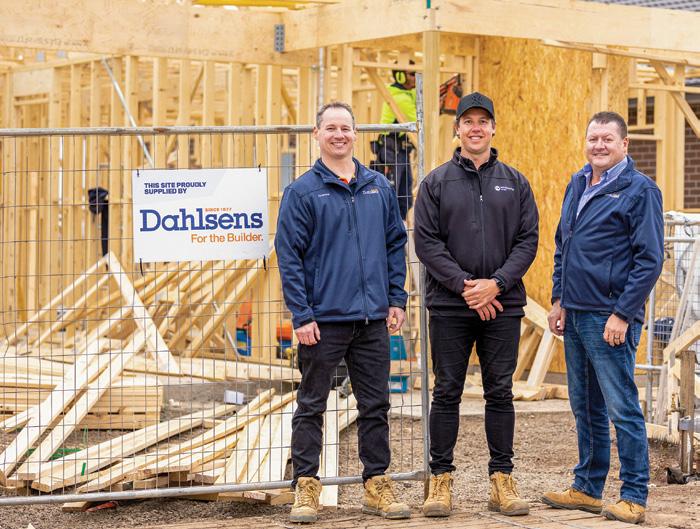
By embracing the innovative solutions offered by Dahlsens, builders, like Ridgewater Property Group, have unlocked significant efficiencies, streamlined workflows, and ultimately accelerated stage payments. From Pryda SpeedTruss™ to FastFix™ Internal Wall Screw, Dahlsens' commitment to quality, innovation and expertise ensures that builders have the tools they need to succeed in an ever-evolving industry.
Andrew Wilson, Director of Ridgewater Property Group, says Dahlsens is their preferred partner for truss and frame solutions.
Pryda SpeedTruss™
• Save up to a day in installation time
• Prefabricated trusses arrive with tie-down screws pre-installed
• Eliminates the need for triple grips
• Ensures safer and cleaner installation process
Pryda FastFix™ Internal Wall Screw
• Saves up to three to four hours of installation time
• Replaces traditional L Brackets
• Reduces the risk of incorrect installations
• Improves project timelines and efficiency It’s not just the quality and innovative solutions that he looks for in a truss and
frame supplier, it’s also expertise and attention to detail.
“We choose to partner with Dahlsens for truss and frame because of their expertise. The product is of really good quality and innovative. The detailing is spot on,” he says.
For Ridgewater, partnering with Dahlsens isn’t just about being supplied with building materials; it’s about aligning with a likeminded partner dedicated to continuous improvement and excellence.
In Andrew’s words, “Our business is all about improving and partnering with people who have got the same mindset. Dahlsens are a fit for us in that regard.” “I definitely recommend other builders choose Dahlsens. I wouldn’t use them otherwise.”
Pryda SpeedTruss™ to FastFix™ Internal Wall Screw are available as standard at all 12 Dahlsens Truss & Frame manufacturing plants in New South Wales and Victoria (Dahlsens Trussme in Canberra is a MiTek fabricator). If you’d like to find out how you can unlock efficiencies for your builds, speak with your local Dahlsens.
Hear why Ridgewater Property Group chooses Dahlsens.

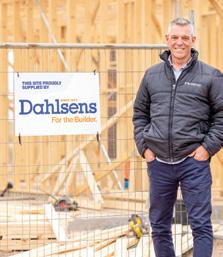
FIRECRUNCH is a system fully tested by NATA certified labs in Australia, and approved for use in all party wall fire applications.

Acoustic Rw 52 net of CTR to FRL 60, 90 and 120 minutes. No H Studs, No U Track








Low
Co2 emission
products and cladding materials have suddenly become a very serious consideration in construction, not just in Australia, but around the globe.
Some European countries such as Norway recently began applying an additional default add-on on pricing relative to the level of Co2, potentially turning a low tender price into the highest.
They use an assessment scale of Co2 pollutive values, seriously affecting products like plasterboard which have little or no carbon capture sequestration value.
These Co2 pollutive assessments could be expanded to Australia through Federal Government intervention if the industry’s reluctance to change is not observed, especially as it moves towards the 2030 43 per cent reduction accord.
FIRECRUNCH AUSTRALIA HAS 12 YEARS EXPERIENCE IN THE USE OF THESE REMARKABLE NEW LOW Co2 MgSO 4 magnesium oxide construction materials.
It has supplied these FireCrunch products to major Australian and internationally based construction projects and those who accede to the use of Low Co2 pollutive cladding.
The huge surge in demand for low Co2 composites and high carbon sequestration products in cladding and general construction has, over the last
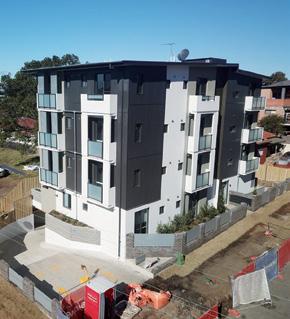
two years, contributed to substantial new investment in high speed, computer driven production lines.
Inexpensive green solutions are NOW currently priced similarly and sometimes lower than conventional 13mm and 16mm Fyrchek MR plasterboard, or similar fire rated plasterboard cladding products in Australia.
MgSO4 products are up to 10 times stronger than plasterboard and enable a single 10mm sheet to achieve a fireresistant level (FRL) of 90/90/90 (90 minutes), otherwise
Pre-fabricated modular, RAAF Fairfield Sydney. FireCrunch Australasia Pty Ltd.
requiring two layers of 16mm Fyrchek or similar plasterboard.
The product halves the material cost, site handling, installation, freight weight transport cost, crane up time and screw fixings materials cost. This increases a project’s bottom line and the return on investment.
MgSO4 composites have no paper linings and are therefore better suited to wet areas and humid climates. As one multipurpose material it covers fire, floods, acoustics, termites, bacteria, mould and heavy impacts, while providing a longer life and low maintenance life.
MgSO4 boards are screw fixed with power tools. They have recessed edges on cladding (30mm wide) to enable the use of regular tapes compounds, providing a top class 4/5 surface finish after priming, undercoat, and two layers of waterbased paint.

This also affords a gradual reduction in the destruction of millions of oxygen-generating, Co2-absorbing trees, to make paper-lined plasterboard.
Responsible architects and construction firms should consider embracing these new greener technologies in pursuit of contributing as much as possible to the reduction in global warming. Every step, no matter how small, is a contributor.
For more information see www.firecrunch.com.au
Peter Jones
Administration Director, FloodClad Australia — FireCrunch Australasia Pty Ltd
14,000 square metres of MgSO4 flooring at Amazon Perth, WA.

Masonry Contractors Australia (MCA) conducted its Annual Awards for Brick and Blocklaying Excellence on Friday 10 November 2023.
Members submitted 28 Entries over 8 Categories with the Overall Winner being awarded from the Winners of the 8 Categories.
The Overall Winner of the Masonry Contractors Australia Excellence in Brick and Block Awards 2023 was awarded to Southern Cross Masonry for Darlington Public School – Chippendale.
The Judges commended the high standard of the work that was evident over the 28 Entries.
With a change of venue to prior years, the Annual Dinner was attended by 186 Members, Sponsors and guests at Dockside, Cockle Bay
Platinum Sponsors:
Wharf, Darling Park. The Master of Ceremonies for the evening was comedian Chris Radburn.
Apprentices honoured on the evening for their achievements were Dean Tufevska – Granville TAFE, Daniel Joya – Miller TAFE, Tahlia Kelly – Newcastle TAFE, Jackson Whitty – Nirimba TAFE and Jarrod Wilson – Wollongong TAFE.
The MCA would like to thank MD Brick (NSW) for their generous donation of $100 Gift Vouchers for each Apprentice Winner.
Masonry Contractors Australia presented the “MCA Recognition Award – Contribution to the Masonry Industry” Award to John White from PGH Bricks & Pavers. The MCA would like to thank John White for his service to the Masonry Industry.
Masonry Contractors Australia would like to thank the Sponsors for their support throughout the year and especially for the evening, who without their support the event would not be possible.
Gold Sponsors:

Silver Sponsors:


Masonry Contractors Australia
Excellence in Brick and Block Awards 2023
Project: Darlington Public School – Chippendale
Contractor: Southern Cross Masonry
Brick Supplier: Bowral Bricks

WINNER Category 1
Single Dwelling – Residential – Brickwork
Project: Little Bay Residence
Contractor: J & O Bricklaying
Brick Supplier: Austral Bricks
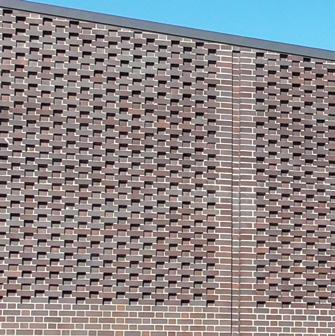
MERIT WINNER Category 3
Commercial and Public Buildings – Brickwork
Project: Lakemba Railway Station
Contractor: Southern Cross Masonry
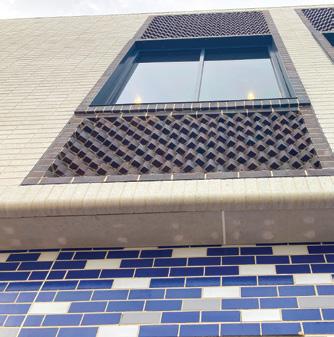
WINNER Category 2
Medium Density – Cluster Housing – Brickwork
Project: Green Square Medical – Zetland
Contractor: Southern Cross Masonry
Brick Suppliers: Austral Bricks and Bowral Bricks
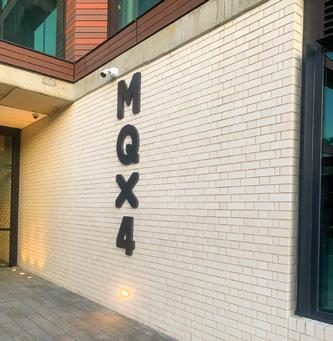
MERIT WINNER Category 3
Commercial and Public Buildings – Brickwork
Project: Macquarie Exchange
Contractor: DJD Brick & Blocklaying

MERIT WINNER Category 3
Commercial and Public Buildings – Brickwork
Project: St Lukes Catholic College – Marsden Park
Contractor: North West Masonry

WINNER Category 3
Commercial and Public Buildings – Brickwork
Project: Darlington Public School – Chippendale
Contractor: Southern Cross Masonry
Brick Supplier: Bowral Bricks

MERIT WINNER Category 3
Commercial and Public Buildings – Brickwork
Project: Coffs Cultural & Civic Space
Contractor: Walsos Bricklaying NSW

WINNER Category 4 Single Dwelling –Residential – Medium Density – Blockwork
Project: Jindabyne House – Willow Bay
Contractor: Wilson’s Brick & Block
Block Supplier: Baines Masonry
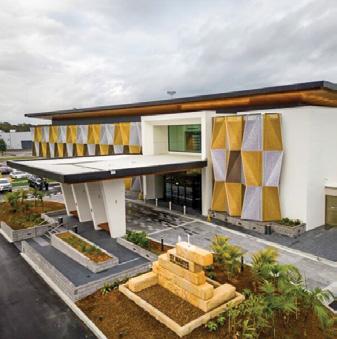
WINNER Category 5
Commercial and Public Buildings – Blockwork
Project: St Marys Rugby League Club
Contractor: eMasonry
Block Supplier: Baines Masonry

Ornamental
Project: St Bartholomew’s Cemetery – Prospect
Contractor: Retaining Wall Systems
Brick Supplier: Austral Bricks
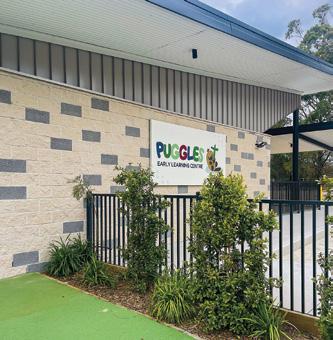
WINNER Category 6
Face – Blockwork
Project: Nepean Christian School – Mulgoa
Contractor: Byblos Constructions and Bricklaying
Block Supplier: Baines Masonry

WINNER Category 8
Ornamental and / or Landscape – Blockwork
Project: Como Pleasure Grounds
Contractor: Ally Civil
Block Supplier: Baines Masonry










The Metal Roofing and Cladding Association of Australia (MRCAA) conducted its Awards of Excellence for 2023 on Friday 17 November 2023 at the Hyatt Regency, Sydney, with 323 in attendance.
Nineteen (19) Contractor Members submitted 150 Entries over the 16 categories. The judges commented on the outstanding craftsmanship being undertaken by members.
Awarded to the Company that exhibits the highest standard across all entries
Winner: Metal Masters Home Improvements
Sponsor: Colorbond
Top
Project: 21 Fuggles Road – Kenthurst
Builder: Hamik Luxury Homes
Bottom
Project: 396A Old Northern Road –Glenhaven
Builder: Saliba Brothers – Owner Builders
The Master of Ceremonies this year was the well-known 2002 Winter Olympics Gold Metalist Speed Skater and speaker Steven Bradbury.
The Rex Blackwell Award – MRCAA Excellence in Roofing Award was awarded to Metal Masters Home Improvements. This is awarded to the Company that exhibits the highest standard across all entries.
The Apprentice of the Year was awarded to
Lehi Grant from Mount Druitt TAFE NSW. Lehi is employed by R Brown & Son Roofing. Congratulations to the Entrants and Winners –you are all a credit to the Roofing Industry. The MRCAA would like to thank the Sponsors for their support throughout the year and especially for the evening who, without their support the event would not be possible.


Single Residential and Duplex Building (Roof Value <$50K)

Winner: ZMH Roofing
Project: West Street – Petersham
Builder:
Sponsor: No1 Roofing & Building Supplies
Single Residential and Duplex Building (Roof Value >$100K)

Winner: Metal Masters Home Improvements
Project: 21 Fuggles Road – Kenthurst
Builder: Hamik Luxury Homes
Sponsor: All Metal (Australia)
Public Building – Roofing and/or Cladding (Roof Value <$500K)
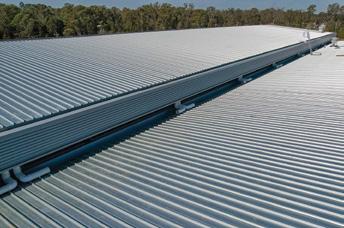
Winner: Kouts Roofing
Project: Unity Grammar School – Austral
Builder: Dynamic Project
Sponsor: Fielders
Single Residential and Duplex Building (Roof Value $50 -100K)
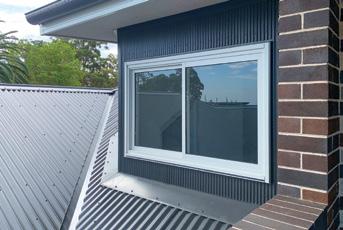
Winner: Metal Masters Home Improvements
Project: 396A Old Northern Road – Glenhaven
Builder: Saliba Brothers – Owner Builders
Sponsor: Eureka Insulation
Multiple Residential Building – Roofing and/or Cladding
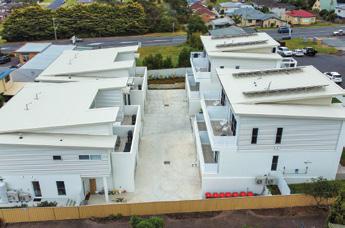
Winner: Enhance Metal Roofing
Project: 6-8 Dolphin Street – Ulladulla
Builder: A & J Projects Australia
Sponsor: Bradford Insulation
Public Building – Roofing and/or Cladding (Roof Value >$500K)

Winner: Axis Metal Roofing
Project: Masons Drive – North Parramatta
Builder: Taylor Constructions
Sponsor: Lysaght

Winner: Roof Tek Group
Project: Symbio Wildlife Park
Builder: Symbio
Sponsor: Kingspan Insulated Panels

Winner: Australia Wide Roofing
Project: 12656 Newell Highway – Narrabri
Builder: Richard Crookes Constructions
Sponsor: Bondor Australia

Winner: IONCLAD
Project: 2 Robe Street – Currimundi QLD
Builder: Valdal Projects
Sponsor: Botany Access

Winner: Axis Metal Roofing
Project: Wally’s Walk – Macquarie Park
Builder: FDC Constructions
Sponsor: Ampelite

Winner: Ideal Metal Roofing
Project: Coles – Kemps Creek
Builder: Qanstruct (Aust)
Sponsor: Stramit
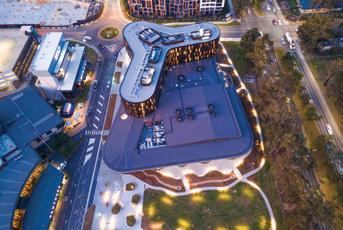
Winner: Quikdeck Roofing
Project: Western Sydney Conference – Penrith
Builder: Richard Crookes Constructions
Sponsor: Lysaght
Curved Roof Installation

Winner: Mr Clad
Project: 13A Ocean Road – Palm Beach
Builder: F.S. Hough Builders
Sponsor: Bondor Australia
Home Improvement
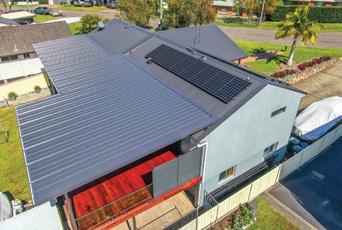
Winner: Alliance Metal Roofing
Project: 55 Ridge Road – Kilaben Bay
Builder: MJD Carpentry
Sponsor: Colorbond
Safety Award
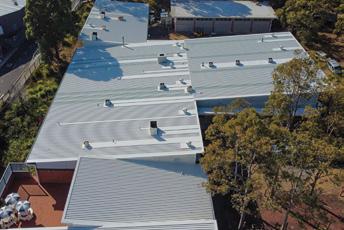
Winner: Enhance Metal Roofing
Project: TAFE Shellharbour – Block H
Builder: Baseline Projects
Sponsor: ATF Services

Wall Cladding

Winner: AGF Metal Roofing
Project: Museum Discovery Centre – Castle Hill
Builder: Taylor Construction Group
Sponsor: Eureka Insulation
Safety Award
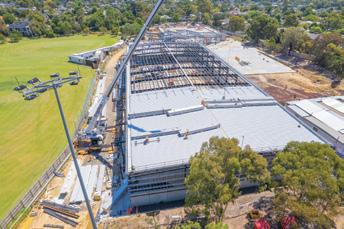
Merit: Professional Plumbing Contractors
Project: Percy Treyvaud Memorial Park
Builder: ADCO Constructions
Sponsor: ATF Services
Apprentice of the Year Award


Winner: Lehi Grant – Mount Druitt TAFE NSW
Employer: R Brown & Son Roofing
Sponsor: Master Builders Association of NSW

Everyone is aware of the current delays with obtaining DA approvals through Councils.
The Southern Highlands Division President Monica Thomas and Committee have been working constantly with the Wingecarribee Council since August 2023. The initiative commenced when MBA Executive Director Brian Seidler, the President and Committee Members convened a Meeting with Builders, Architects and Private Certifiers in the local area.
We are so pleased to advise that on Wednesday 7 February 2024, Adan Davis, Jon Shillito, Catherine Fuller and Chris Young, who are the Development Team with the Council attended the Division Meeting and gave an informative presentation regarding Development Application time frames, changes and initiatives.
Their presentation was very well received by our members and an important pathway to communication and collaboration with the local building industry.
Our members really appreciated their time and expertise and are looking forward to working closely with the Development Team in the future.
The MBA Shoalhaven Division had the pleasure of Sponsoring the Ulladulla High School Presentation Night in December. Lynn Smith attended and presented the Master Builders Association Scholarships to Year 11 Students Matthew Dixon and Rowan Faulconer who are both appreciative of the contribution from the Master Builders to help with their ongoing education and say Thank You!
They both said they will be using the funds to help with the costs toward their Year 12 Major Work for Construction and Industrial Technology Timber.
The Master Builders Association Southern Regions invites nominations from MBA members and non-members who reside or have completed a project in the Southern Regions.

Entries are now open and required to be submitted and managed via our online AwardsForce Platform.
Entries will close Sunday 14 April 2024.

I n 2023, Raymond Vincent Constructions marked its 50th year, a testament to its enduring legacy of creating high-quality, bespoke homes in New South Wales.
Founded by 24-year-old Raymond Vincent in 1973 with a vision to offer fair-priced, quality homes, the company has designed and built award-winning residences across
the Illawarra, South Coast, and Southern Highlands.
Raymond began his career as a draftsman before venturing into building with a franchise, later establishing his brand to focus on custom, high-end homes. This shift to marketing his brand led to the success of Raymond Vincent Homes, known for its attention to detail and innovative design, winning numerous awards including a national accolade in 2022.
The company, while not focused on volume, is recognised for its quality and unique designs, maintaining a commitment to excellence and integrity as envisaged by its founder. With nearly 800 homes built, Raymond Vincent Homes has cultivated a reputation for distinction, relying on wordof-mouth and its award-winning display homes for business.
Ray's commitment extends beyond building; he's actively contributed to the community and industry, earning respect and accolades for his service.
As Raymond Vincent Homes celebrates 50 years, it stands as a beacon of quality and innovation in the building industry, embodying the founder’s original vision of honesty and excellence in construction.
On Friday 1 December 2023, Adda Constructions held their annual Tradies Golf Day at the Armidale Golf Club. There were over 130 attendees on the day and Master Builders Association NSW were proud sponsors of this event. The auction on the day was a huge success and the entire day efforts raised a huge $18,750 for Mates in Constructions.
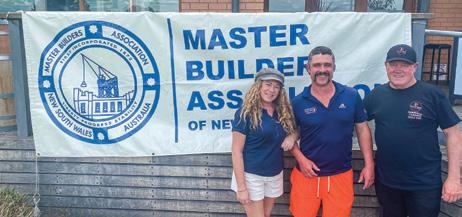




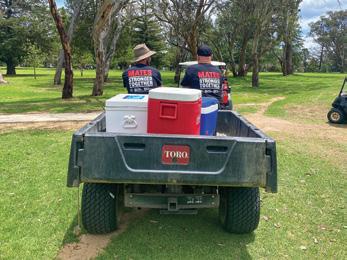

We held our AGM & Social Bowls Night in Tenterfield in October. Our Tenterfield members enjoyed a BBQ with family and guests and bowled the night away.
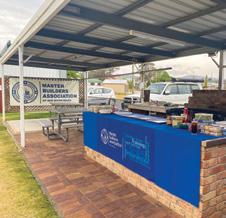


In January, our Ballina office welcomed Esther Kirch as the new Member Services Representative.
Esther is here to assist members through engagement, information resources and by assisting Kate with the day-to-day event coordination, networking events and administration.
Esther is extremely excited in her new role and looks forward to continuing to support our members by providing consistent communication and overall member satisfaction.
I n December 2023, we farewelled Alan Fraser from our Ballina Office as he hung up his insurance hat to start a new journey into Retirement.
He is now enjoying planning his caravan trips and spending more time with his grandchildren.
MBIB are still here to support you all with all of your insurance needs and will have some exciting news on the horizon regarding Alan’s replacement in the Ballina office, so watch this space!
Our New England members in Armidale attended their division night at Petersons Winery in December and were presented by Matthew Rees from Buildcert, Alan Fraser from MBIB and Brad Parker from Mates in Construction.
We also held our Mid North Coast Division night and AGM at the Coffs Harbour Golf Club, with another great turn out. Each Division night is growing in numbers and it great to see such a great turn out to these nights. Please check our website and your local divisions for all future 2024 dates and locations.
The Master Builders CPC31420 Certificate III in Construction Waterproofing was completed at our Ballina office in December.
The full 23 CPD points can be obtained during this course and you can walk away with a nationally recognised qualification. Please also remember there have been changes to waterproofing standards so if you would like to sign up for this course that starts at our Ballina office on Friday 21 June 2024, please call the MBA RTO team (ID 6163) on 8586 3588.

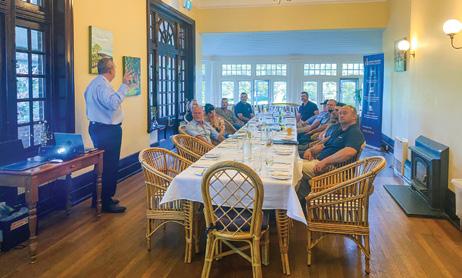

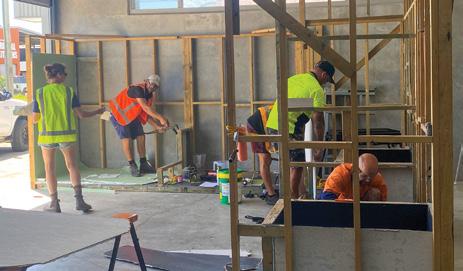
Illawarra Division – Gold Medal Presentation – John Dowling
Our annual Cox Plate Race Day was held at Kembla Grange Racecourse in October and proudly sponsored by WesTrac. It was a very special day, in that the MBA NSW Illawarra Division honoured and recognised one of its long serving members with a special award.
Strebre Delovski, MBA Deputy Executive Director, was in attendance to present the Divisional Gold Medal to John Dowling who has served the division and been a member of the MBA for more than 33 years.
The Divisional Gold Medal is an award that is bestowed upon a member, by his or her peers — it is an award that represents the highest recognition by fellow builders on an individual who has contributed to the division and the MBA.
John was first elected to the Illawarra committee during the 1990s. During his time, John has worked tirelessly and has served the Illawarra Division in various roles such as Vice President and Treasurer. He was elected to the position of President of the Division in 1996, serving for a period of two years.
John was again elected President of the division in 2004 for another twoyear term. John not only served on the Illawarra Division for many, many years, but has served on many MBA Committees representing his division and indeed representing the interests of the Illawarra. Currently John serves as a Trustee for the division.
Congratulations John Dowling – well deserved.


Lee Tanks, MBA Regional Manager NSW, with Divisional Gold Medal recipient John Dowling.


I n February, the Central West Division ran their 12th MBA Central West Division Golf Day. There were a couple of uninvited downpours during the day, but that did not stop the 124 participants from a fun day out showing off some exceptional — and questionable — golf swings.
We would like to thank our unwavering sponsors for their donations, participation and support on the day. We should all be proud of the strong relationships and construction businesses that exist in the Central West.
Orana – Dubbo
Tuesday, 9 April
Macquarie Inn – Birch Avenue, Dubbo
Central West – Orange
Wednesday, 10 April
Waratahs Sports Club – 34 Telopea Way, Orange


 Central West Committee President Mick Banks presenting Bruno from Tradies Insight with donation.
Highest placed MBA member – Luke Thorley.
Overall Winners Paul McNamara and Jono Bell.
Central West Committee President Mick Banks presenting Bruno from Tradies Insight with donation.
Highest placed MBA member – Luke Thorley.
Overall Winners Paul McNamara and Jono Bell.
On Thursday 22 February, the Master Builders Association hosted its first CPD Seminar of the year at McDonald Jones Stadium, Newcastle. Presenters from leading industry players delivered insights on crucial topics:
• National Construction Code (NCC): Ben Ryan highlighted NCC compliance essentials.
• Steel Framing Advantages: Steve Merheb explored the efficiency of Light Gauge Steel (LGS) framing.
• Frame & Truss Innovation: Ian Hayward discussed compliance and future timber framing.
• Market Trends & Designs: Deepankar Goyal & Josiah McCreadie unveiled modern design trends and the Hardie Architectural Collection.
We would like to express our gratitude to our Platinum sponsors: Master Builders
On Saturday, 17 February 2024, a sense of anticipation filled the air, heralding the arrival of one of the most prestigious events on our calendar — the Hunter Division Race Day. Against the backdrop of blue skies, 170 esteemed guests gathered within the grandeur of our marquee, poised to embark on another unforgettable journey of horse racing and camaraderie.
This year, our celebration was elevated to new heights with the magnetic presence of the talented Jake Folbigg, whose soulful melodies and charismatic tunes added an extra layer to our festivities.
This year’s event was a celebration of community spirit and unwavering support from our cherished members and sponsors. With gratitude, we extend our appreciation to the NHS, Master Builders Apprentices, and Master Builders Insurance Brokers, whose partnership has been instrumental in making this day possible.
Every moment was infused with the electrifying energy of competition and camaraderie. Yet, amidst the thrill of victory and the pulse of the races, let us not forget the true essence of this day — a celebration of unity, fellowship, and the enduring spirit of our community.
To our esteemed guests, sponsors, and members, we extend our gratitude for gracing us with your presence and making this day excellent.

Innovation, collaboration, and excellence are reshaping the construction landscape. Together, we are building a brighter future.




 Insurance Brokers, FlameFixx, and Alinta Energy, and other sponsors; Group Training Apprentices and MBA Education.
Insurance Brokers, FlameFixx, and Alinta Energy, and other sponsors; Group Training Apprentices and MBA Education.
In the world of construction, where strength meets innovation and resilience intertwines with creativity, our Women in Construction event was held Friday 24 November 2023 at the breathtaking Newcastle Mereweather Surfhouse. At the heart of this event was the incomparable Lisa McGuiggan, whose presence infused the evening with a sense of elegance and excitement like never before. With her distinctive approach to wine tasting, Lisa masterfully blended education with entertainment, captivating our audience and igniting a spark of curiosity and camaraderie among all attendees.
Lisa guided us on a sensory journey, unraveling the complexities of wine and unraveling stories that left a lasting impression on our hearts and minds. Her passion for her craft was palpable, her expertise undeniable, and her ability to connect with the audience unparalleled.
Through her unique lens, she reminded us of the importance of embracing new experiences and fostering meaningful connections.
Beyond the brilliance of Lisa’s presentation, we must also extend our gratitude to our esteemed sponsors, BlueScope and Master Builders Insurance Brokers, whose unwavering support and commitment to excellence have been instrumental in bringing this event to fruition.
As we reflect on the success of our Women in Construction event, let us celebrate the spirit of collaboration, empowerment, and innovation that fueled its success. Let us raise our glasses to Lisa McGuiggan, our sponsors for their invaluable support, and to all the women in construction who continue to defy expectations and pave the way for a brighter, more inclusive future. Here’s to breaking barriers, shattering stereotypes, and building a world where every voice is heard, and every dream is within reach. Cheers to progress, possibility, and the power of women in construction!















